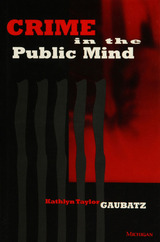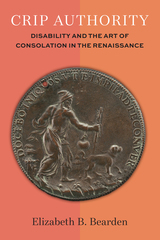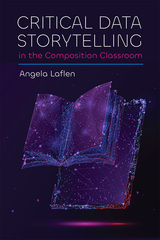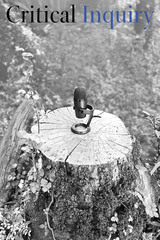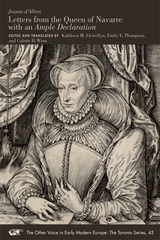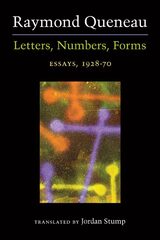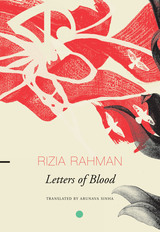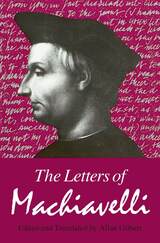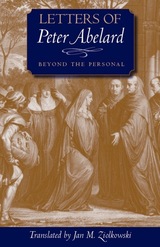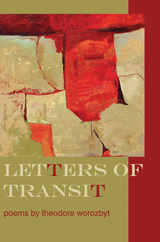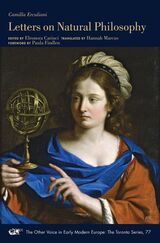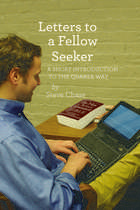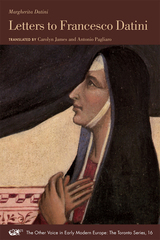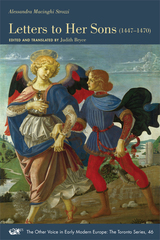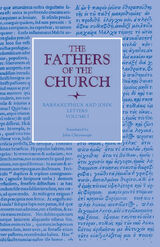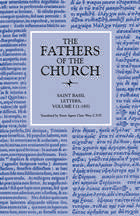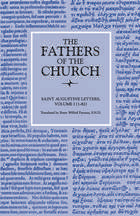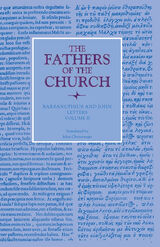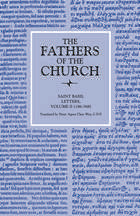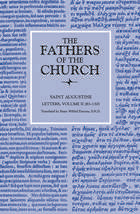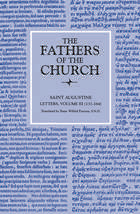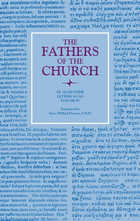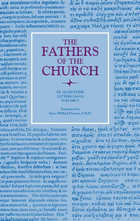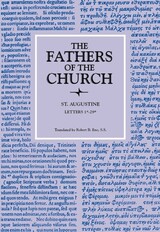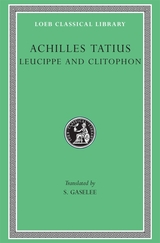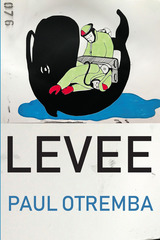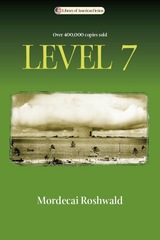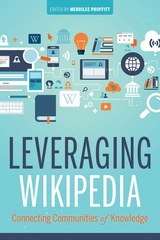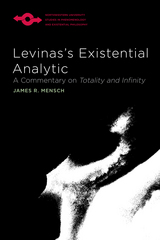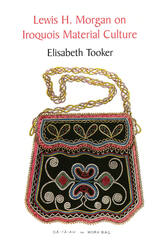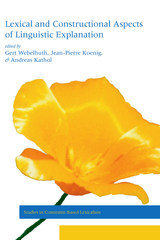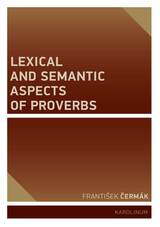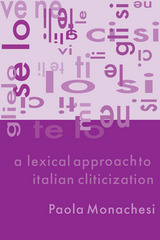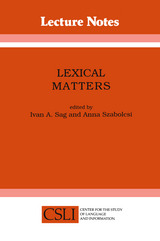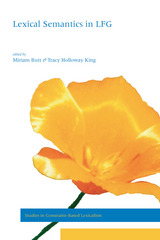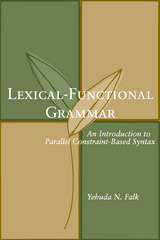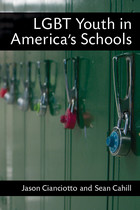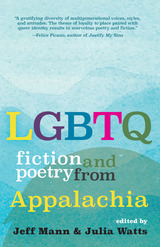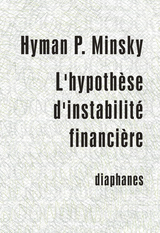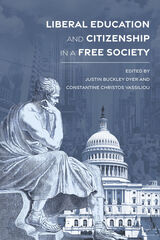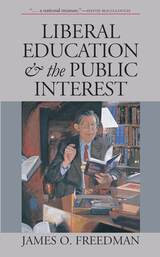Letters from the Queen of Navarre with an Ample Declaration
Jeanne d’Albret
Iter Press, 2016 This edition presents in English, for the first time, Jeanne d’Albret’s Letters to the king, his mother, his brother, her own brother-in-law, and the queen of England, together with her Ample Declaration (1568) defending her decampment to the Protestant stronghold of La Rochelle. A historical-biographical introduction situates these writings in the larger context of Reformation politics and examines in detail the specific literary characteristics of her memoir. In her works, Jeanne d’Albret asserts her own position as legal sovereign of Béarn and Navarre and situates herself at the nexus of overlapping political, religious, and familial tensions.
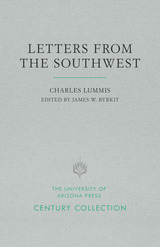 Letters from the Southwest
Charles Lummis; Edited by James W. Byrkit
University of Arizona Press In the fall of 1884, journalist Charles Lummis set out on foot from Ohio to California on assignment for the Los Angeles Times. The reports he mailed ahead to that newspaper were later refashioned for the book A Tramp Across the Continent, a work that helped to establish Lummis as the most active promoter of Southwestern culture who ever lived. Lummis wrote another set of letters during his journey, however, which he sent back to Ohio for publication by the Chillicothe Leader. Although these letters contain basically the same narrative as those sent to Los Angeles and later found in A Tramp, the Ohio letters more closely reflect the author’s thoughts and observations while on the journey. In fact, a comparison of the two drafts indicates that Lummis spent considerable effort removing spontaneous details from the Ohio letters in favor or a more commercial, self-promoting, and politic reporting for the California paper. The twenty-four Ohio letters, assembled here by James W. Byrkit, offer a far more candid look at the Southwest than Lummis was later to bring to print, as well as greater insight into the author’s own personality. Byrkit’s introductory essay provides the background for Lummis’s career, compares the three bodies of work relating to the trek, and offers an account of Lummis’s transformation from chronicler to promoter.
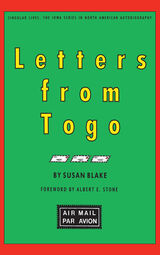 Letters from Togo
Susan Blake
University of Iowa Press, 1991 Blake's adventurous essays—her Letters from Togo—are based on the letters she wrote to her friends from Lomé, the West African capital where she spent a Fulbright year teaching American literature from 1983 to 1984. As Blake begins the process of making sense out of a vibrant, seeming anarchy, we are pulled along with her into the heart of Togo—a tiny dry strip of a country no one can even find on a map.
With her delightful prose and insight for detail Blake introduces us to Mahouna, her housekeeper, who runs a cold drink business from his refrigerator in a country where electricity is unreliable; to American Lee Ann and her Togolese family, who works at the American school to earn the fees for a private education for her children; and to the suave René, wearing silk shirts and a most seductive smile, who teeters on the edge of the Togolese and expatriate worlds.
Since Lomé is both an overgrown village and a cosmopolitan city, Blake's exhilarating, often humorous experiences range from buying a car to attending a traditional tom-tom funeral, from visiting people who hunt with bows and arrows to enduring faculty meetings, from negotiating the politics of buying produce to lecturing on Afro-American literature at the English Club. Together, her enlivening letters trace the pattern of adjusting to a foreign environment and probe the connections between Africa and this curious, energetic American. Not "out of Africa" but within it, they take advantage of time and perspective to penetrate the universal experience of being a stranger in a strange land.
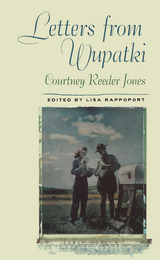 Letters from Wupatki
Courtney Reeder Jones; Edited by Lisa Rappoport
University of Arizona Press, 1995 When David and Courtney Reeder Jones moved into two rooms reached by ladder in a northern Arizona Indian ruin, they had been married only two weeks. Except for the ruin's cement floors, which were originally hardened mud, and skylights instead of smokeholes, the rooms were exactly as they had been 800 years before.
The year was 1938, and the newlyweds had come to Wupatki National Monument as full-time National Park Service caretakers for the ruin. Remote in time and place, their story as described in Courtney's letters will take readers into a dramatic landscape of red rocks, purple volcanoes, and endless blue sky. Here, some 60 years ago, two young people came to terms with their new life together and with their nearly total reliance upon each other and their Navajo neighbors.
"They helped us in any way that a neighbor would, and we helped them as we could," wrote Courtney in her memoirs years later. Vivid and engaging, her letters home spill over with descriptions of their friendship with local Navajo families, their sings and celebrations, and her good luck in being able to be a part of it all.
Letters from Wupatki captures a more innocent era in southwestern archaeology and the history of the National Park Service before the post-war years brought paved roads, expanded park facilities, and ever-increasing crowds of visitors. Courtney's letters to her family and friends reflect all the charm of the earlier time as they convey the sense of rapid transition that came after the war.
Tracking those changes in the development of Wupatki National Monument and the National Park Service, the letters also—and perhaps more important—reveal changes in the Joneses themselves. Of particular interest to anthropologists and historians, their story also gives the general reader captivating glimpses of a partnership between two people who only grew stronger for the struggles they shared together.
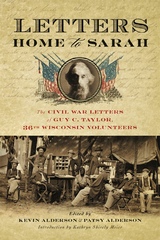 Letters Home to Sarah: The Civil War Letters of Guy C. Taylor, Thirty-Sixth Wisconsin Volunteers
Guy C. Taylor; Edited by Kevin L. Alderson and Patsy Alderson; Introduction by Kathryn Shively Meier
University of Wisconsin Press, 2012 Forgotten for more than a century in an old cardboard box, these are the letters of Guy Carlton Taylor, a farmer who served in the Thirty-Sixth Wisconsin Volunteer Infantry Regiment in the American Civil War. From March 23, 1864, to July 14, 1865, Taylor wrote 165 letters home to his wife Sarah and their son Charley.
From the initial mustering and training of his regiment at Camp Randall in Wisconsin, through the siege of Petersburg in Virginia, General Lee’s surrender at Appomattox, and the postwar Grand Review of the Armies parade in Washington, D.C., Taylor conveys in vivid detail his own experiences and emotions and shows himself a keen observer of all that is passing around him. While at war, he contracts measles, pneumonia, and malaria, and he writes about the hospitals, treatments, and sanitary conditions that he and his comrades endured during the war. Amidst the descriptions of soldiering, Taylor’s letters to Sarah are threaded with the concerns of a young married couple separated by war but still coping together with childrearing and financial matters. The letters show, too, Taylor’s transformation from a lonely and somewhat disgruntled infantryman to a thoughtful commentator on the greater ideals of the war.
This remarkable trove of letters, which had been left in the attic of Taylor’s former home in Cashton, Wisconsin, was discovered by local historian Kevin Alderson at a household auction. Recognizing them for the treasure they are, Alderson bought the letters and, aided by his wife Patsy, painstakingly transcribed the letters and researched Taylor’s story in Wisconsin and at historical sites of the Civil War. The Aldersons’ preface and notes are augmented by an introduction by Civil War historian Kathryn Shively Meier, and the book includes photographs, maps, and illustrations related to Guy Taylor’s life and letters.
 Letters, Kinship, and Social Mobility in Nigeria
Olufemi Vaughan
University of Wisconsin Press, 2023 In 2003, Olufemi Vaughan received from his ninety-five-year-old father, Abiodun, a trove of more than three thousand letters written by four generations of his family in Ibadan, Nigeria, between 1926 and 1994. The people who wrote these letters had emerged from the religious, social, and educational institutions established by the Church Missionary Society, the preeminent Anglican mission in the Atlantic Nigerian region following the imposition of British colonial rule. Abiodun, recruited to be a civil servant in the colonial Department of Agriculture, became a leader of a prominent family in Ibadan, the dominant Yoruba city in southern Nigeria. Reading deeply in these letters, Vaughan realized he had a unique set of sources to illuminate everyday life in modern Nigeria.
Letter writing was a dominant form of communication for Western-educated elites in colonial Africa, especially in Nigeria. Exposure to the modern world and a growing sense of nationalism were among the factors that led people to begin exchanging letters, particularly in their interactions with British colonial authorities. Through careful textual analysis and broad contextualization, Vaughan reconstructs dominant storylines, including themes such as kinship, social mobility, Western education, modernity, and elite consolidation in colonial and post-colonial Nigeria. Vaughan brings his prodigious skills as an interdisciplinary scholar to bear on this wealth of information, bringing to life a portrait, at once intimate and expansive, of a community during a transformative period in African history.
Letters, Numbers, Forms: Essays, 1928-70
Raymond Queneau
University of Illinois Press, 2007 The first English translation of essays from one of the twentieth century's most intriguing avant-garde writers Compiled from two volumes of Raymond Queneau's essays (Bâtons, chiffres et lettres and Le Voyage en Grèce), these selections find Queneau at his most playful and at his most serious, eloquently pleading for a certain classicism even as he reveals the roots of his own wildly original oeuvre. Ranging from the funny to the furious, they follow Queneau from modernism to postmodernism by way of countless fascinating detours, including his thoughts on language, literary fashions, myth, politics, poetry, and other writers (Faulkner, Flaubert, Hugo, and Proust). Translator Jordan Stump provides an introduction as well as explanatory notes about key figures and Queneau himself.
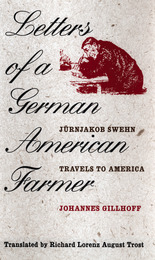 Letters of a German American Farmer: Juernjakob Swehn Travels to America
Johannes Gillhoff
University of Iowa Press, 2001 Early in the twentieth century, drawing upon the hundreds of letters written to his father by students who had emigrated to northeastern Iowa from Mecklenburg, in northeastern Germany, Johannes Gillhoff created the composite character of Juernjakob Swehn: the archetype of the upright, honest mensch who personified the German immigrant, on his way to a better life through ambition and hard work. Gillhoff's farmer-hero, planting and harvesting his Iowa acres, joking with his neighbors during the snowy winters, building a church with his own hands, proved so popular with the German public that a million copies of Jürnjakob Swehn der Amerikafahrer are in print. Now for the first time this wise and endearing book is available in English. “First, let's talk about pigs,”Juernjakob Swehn writes from his farm in Iowa. “In America, pigs have a curly tail and talk in Low German so I can understand them.” Swehn builds a log house and makes a success of farming, marries a woman who's “a whole different nation that has its confidence from the inside,” raises a family, and becomes an elder in the Lutheran church. He recognizes his good fortune but acknowledges that memories of his village grow stronger every year, that “being homesick is the best thing that home can do for you …no power on earth holds on to you like your homeland.” It is this sense of home, both in Iowa and in Mecklenburg, that makes Juernjakob Swehn appeal to today's readers as much as he appealed to readers in 1916.
 Letters of a Dead Man
Prince Hermann von Pückler-Muskau
Harvard University Press In 1826, the prince of Pückler-Muskau embarked on a tour of England, Wales, and Ireland. Although captivated by all things British, his initial objective was to find a wealthy bride. He and his wife Lucie, having expended every resource on a plan to transform their estate into a vast landscape park, agreed to an amicable divorce, freeing him to forge an advantageous alliance that could rescue their project. For over two years, Pückler’s letters home conveyed a vivid, often quirky, and highly entertaining account of his travels. From the metropolis of London, he toured the mines and factories of the Industrial Revolution and visited the grand estates and spectacular art collections maintained by its beneficiaries. He encountered the scourge of rural and urban poverty and found common cause with the oppressed Irish. With his gift for description, Pückler evokes the spectacular landscapes of Wales, the perils of transportation, and the gentle respite of manor houses and country inns. Part memoir, part travelogue and political commentary, part epistolary novel, Pückler’s rhetorical flare and acute observations provoked the German poet Heinrich Heine to characterize him as the “most fashionable of eccentric men—Diogenes on horseback.”
 Letters of a Loyalist Lady: Being the Letters of Ann Hulton, Sister of Henry Hulton, Commissioner of Customs at Boston, 1767-1776
Ann Hulton
Harvard University Press Anne Hulton was the sister of Henry Hulton, Commissioner of Customs in Boston during the years just before the Revolution. She lived with her brother and his family in a house on Walnut Street in Brookline, then a mere village. Her letters are thoroughly feminine; for they abound in detail about the health of the children, the expenses of housekeeping, and the doings of the neighbors. Greater matters concern her also: she has to record a raid on her brother's house by the patriots, the riots in King Street, the Boston Tea Party, and the expedition to Lexington and Concord. Twice the family had to flee to the Castle. Thus her letters have value in two aspects: as a detailed and lively description of domestic life in pre-Revolutionary days, and as a reflection of British official beliefs and opinions about the events that led to the ultimate break with the mother country. In both aspects, they have a rich historical interest.
 The Letters of Alfred Lord Tennyson
Alfred Lord Tennyson
Harvard University Press The first volume of The Letters of Alfred Lord Tennyson showed the young manbecoming a poet and recorded the experiences--out of which so much of his poetrywas forged--that culminated in three personal triumphs: marriage, In Memoriam,and the Poet Laureateship. Volume IIreveals the gradual emergence of a new anddifferent Tennyson, moving confidentlyamong the great and famous--the intellectual, political, and artistic elite--yetremaining very much a son of Lincolnshire,whose childlike simplicity of manner strikesall who meet him. As a young man, he wasobliged to be paterfamilias of his father'sfamily; now he has a family of his own,with two sons reaching manhood, twohouses, and two lives, one in London andthe other at home.
Through the letters we learn somethingabout his poetry (including "Maud," andThe Idylls of the King), much abouthis dealings with publishers, and evenmore about his travels--in Scotland,Wales, Cornwall, Norway, Switzerland,Auvergne, Brittany, the Pyrenees--and itis clear that all that he met became part ofhim and of his poetry. By the close of thisvolume he is one of the two or three mostfamous names in the English-speakingliterary world.
The edition includes an abundance of letters to and about Tennyson as well as byhim, and its generous annotation has beencommended by reviewers for its range andwit.
 The Letters of Alfred Lord Tennyson
Alfred Lord Tennyson
Harvard University Press, 1981 Many years in preparation, this first volume of Lang and Shannon's edition of Tennyson's correspondence lives up to all expectations. In a comprehensive introduction the editors present not only the biographical background, with vivid portrayals of the dramatis personae, but also the story of the manuscripts, the ones that were destroyed and the many that luckily survived.
The Tennyson who emerges in this volume is not a serene or Olympian figure. He is moody, impulsive, often reckless, now full of camaraderie, now plagued by anxiety or resentment, deeply attached to close friends and family and uninterested in the social scene. His early life is unenviable: we see glimpses of the embittered, drunken father, the distraught mother, the swarm of siblings in the rectory at Somersby in Lincolnshire. The happiest period is the three years at Cambridge, terminated when his father dies, and the two years thereafter, with Arthur Hallam engaged to his sister and a frequent visitor at their house. The shock of Hallam's death in 1833, coupled with the savage attack on Tennyson's poems in the Quarterly Review, is followed by depression, bouts of alcoholism, financial problems, and gradually, in the 1840s, increasing recognition of his work. The year 1850 sees the publication of In Memoriam, his long-deferred marriage at age forty to Emily Seliwood, and his acceptance, not without misgivings, of the post of Poet Laureate.
The editors have garnered and selected a large number of letters to and about Tennyson which supplement his own letters, fill in lacunae in the narrative, and reveal him to us as his friends and contemporaries saw him.
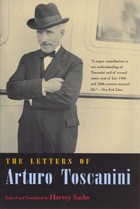 The Letters of Arturo Toscanini
Arturo Toscanini
University of Chicago Press, 2006 Fifty years after his death, Arturo Toscanini is still considered one of the greatest conductors in history, and probably the most influential. His letters, expertly collected, translated, and edited here by Harvey Sachs, will give readers a new depth of insight into his life and work. As Sachs puts it, they “reveal above all else a man whose psychological perceptions in general and self-knowledge in particular were much more acute than most people have thought likely.” They are sure to enthrall anyone interested in learning more about one of the great lives of the twentieth century. “This is a major contribution to our understanding of Toscanini and of several entire eras of late nineteenth- and twentieth-century musical life, especially the almost improvisatory looseness of opera in Italy, the glamour of European festivals, and the concert life of the United States. It’s also a wonderful, sometimes downright salacious read.”—New York Times
“Toscanini’s large, cranky humanity comes alive throughout his letters, as it does in his best recordings.”—New York Review of Books
“Edited with scrupulous care and wide-ranging erudition.”—Wall Street Journal
“Sachs has served the conductor well . . . by editing this generously annotated and unprecedentedly revealing collection of letters that were written, usually in haste and often in fury, over the course of seventy years.”—Washington Post
Letters of Blood
Rizia Rahman
Seagull Books Bengali writer Riza Rahman is the author of more than fifty novels, as well as countless short stories, set in Bangladesh and bringing to life the difficult, mostly forgotten lives of its poorest and most disadvantaged citizens. Letters of Blood is set in the often violent world of prostitution in Bangladesh. Rahman brings great sensitivity and insight to her chronicles of the lives of women trapped in that bleak world as they face the constant risk of physical abuse, disease, and pregnancy, while also all too often struggling with drug addiction. A powerful, unforgettable story, Letters of Blood shows readers a hard way of life, imbuing the stories of these women with unforgettable empathy and compassion.
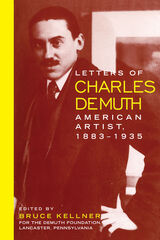 Letters Of Charles Demuth
Bruce Kellner
Temple University Press, 2000 Charles Demuth is widely recognized as one of the most significant American modernists. His precisionist cityscapes, exquisite flowers, and free-wheeling watercolors of vaudeville performers, homosexual bathhouses, and cabaret scenes hand in many of the country's most prestigious collections, including the Metropolitan Museum of Art, the Philadelphia Museum of Art, the Columbus Museum of Art, the Amon Carter Museum in Fort Worth, the Art Institute of Chicago, and in Demuth's Lancaster, Pennsylvania, family residence, now home of the Demuth Foundation. At a time when many American artists remained tied to Europe, Demuth "Americanized" European modernism.
This collection of 155 of his letters offers valuable views of the arts and letters colonies in Provincetown, New York, and Paris. Besides offering information on Demuth's own works, the letters also shed light on the output of his contemporaries, as well as references to their trips, liaisons, and idiosyncrasies. Demuth numbered among his correspondents some of the most famous artists and writers of his time, including Georgia O'Keeffe, Eugene O'Neill, John Reed, Gertrude Stein, Alfred Stieglitz, Carl Van Vechten, and William Carlos Willliams. In his travels in the United States and abroad, he encountered many other talented contemporaries: Peggy Bacon, Muriel Draper, Marcel Duchamp, the Stetthemer sisters, artists and writers, patrons, and gallery owners.
Whether he is offering to pick up a copy of Joyce's Ulysses for Eugene O'Neill or trying to convince Georgia O'Keeffe to decorate his music room ("just allow that red and yellow 'canna' one to spread until it fills the room"), Demuth is always in the thick of art and literary life. Flamboyant in attire but discreet in his homosexuality, Demuth also reveals in his letters the life of a talented homosexual in the teens and twenties. With his best friends Robert Locher and Marsden Hartley, he circulated through the art colonies of Greenwich Village, Provincetown, and Paris, meeting everyone.
The book also contains reprints of some short appraisals of Demuth and his work that were published during his lifetime, long out of print, including pieces by A. E. Gallatin, Angela E. Hagen, Marsden Hartley, Helen Henderson, Henry McBride, Carl Van Vechten, Rita Wells, and Willard Huntington Wright.
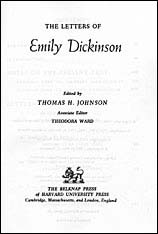 Letters of Emily Dickinson
Emily Dickinson
Harvard University Press, 1986 Approximately 100 letters are published here for the first time, including almost all of the letters to Jane Humphrey and to Mrs. J. Howard Sweetser. The new material is even more extensive than it might appear, for many of the letters previously published were censored when first made public. This volume, designed to accompany Mr. Johnson’s previously published work, the widely acclaimed Poems of Emily Dickinson, assembles all of Emily Dickinson’s letters (with the exception of letters presumably destroyed). The editors present the letters chronologically, with manuscript location, previous publication data, and notes for each letter, together with a general introduction, and biographical notes on recipients of letters.
The notes for each letter identify persons and events mentioned, and the source of literary allusions and quotations is given wherever known. Since Emily Dickinson rarely dated her letters after 1850, the dates for the most part must be conjectured from careful study of handwriting changes and from internal evidence of the letters. Of the 1,150 letters and prose fragments included in this outstanding edition, the text of about 800 derives from Dickinson autographs.
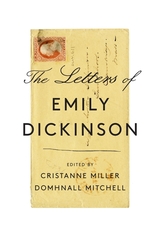 The Letters of Emily Dickinson
Emily Dickinson
Harvard University Press, 2024 One of the Top 10 “Books We Love” —Fresh Air
The definitive edition of Emily Dickinson’s correspondence, expanded and revised for the first time in over sixty years.
Emily Dickinson was a letter writer before she was a poet. And it was through letters that she shared prose reflections—alternately humorous, provocative, affectionate, and philosophical—with her extensive community. While her letters often contain poems, and some letters consist entirely of a single poem, they also constitute a rich genre all their own. Through her correspondence, Dickinson appears in her many facets as a reader, writer, and thinker; social commentator and comedian; friend, neighbor, sister, and daughter.
The Letters of Emily Dickinson is the first collected edition of the poet’s correspondence since 1958. It presents all 1,304 of her extant letters, along with the small number available from her correspondents. Almost 300 are previously uncollected, including letters published after 1958, letters more recently discovered in manuscript, and more than 200 “letter-poems” that Dickinson sent to correspondents without accompanying prose. This edition also redates much of her correspondence, relying on records of Amherst weather patterns, historical events, and details about flora and fauna to locate the letters more precisely in time. Finally, updated annotations place Dickinson’s writing more firmly in relation to national and international events, as well as the rhythms of daily life in her hometown. What emerges is not the reclusive Dickinson of legend but a poet firmly embedded in the political and literary currents of her time.
Dickinson’s letters shed light on the soaring and capacious mind of a great American poet and her vast world of relationships. This edition presents her correspondence anew, in all its complexity and brilliance.
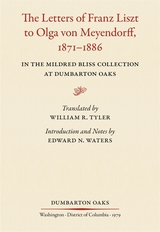 The Letters of Franz Liszt to Olga von Meyendorff, 1871–1886: In the Mildred Bliss Collection at Dumbarton Oaks
Franz Liszt
Harvard University Press, 1979 These letters of Franz Liszt are a part of the Dumbarton Oaks Collection bequeathed to Harvard University by Mrs. Robert Woods Bliss in 1969. Written during the last sixteen years of Liszt’s life, they are addressed to the Baroness Olga von Meyendorff, who shared his interests, though not always his views, in a broad field of disciplines—music, philosophy, theology, politics, literature—as well as his concern for persons both prominent and familial.
The translation by William R. Tyler, who from 1969 to 1977 was Director of Dumbarton Oaks, is provided with notes and an Introduction by Edward N. Waters, widely recognized authority on Liszt and formerly Chief of the Music Division of the Library of Congress.
Composed with warmth and humor, and not infrequently with some asperity, the letters reveal Liszt to have been an ardent, generous, and modest man, loyal and devoted to family and friends, pupils and colleagues alike.
Though it was first intended to publish the letters in their original French as well as in translation, the cost of such a publication proved to be prohibitive. However, copies of the letters, or, when necessary, the letters themselves may be consulted by qualified readers at Dumbarton Oaks.
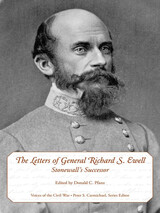 The Letters of General Richard S. Ewell: Stonewall’s Successor
Donald C. Pfanz
University of Tennessee Press, 2012 “The Letters of General Richard S. Ewell provide a sweeping view of the nineteenth century. Such chronological breadth makes this volume truly exceptional and important. Through Ewell’s eyes we see the many worlds of an American people at war. His thoughtful observations, biting wit, and ironic disposition offer readers a chance to rethink the paper-thin generalizations of Ewell as a quirky neurotic who simply crumbled under the legacy of Stonewall Jackson.” —from the foreword by Peter S. Carmichael
Richard S. Ewell was one of only six lieutenant generals to serve in Lee’s Army of Northern Virginia, and of those he was but one of two—the other being Stonewall Jackson, his predecessor as commander of the Second Corps—to have left behind a sizable body of correspondence. Forty-nine of Ewell’s letters were published in 1939. This new volume, drawing on more recently available material and scrupulously annotated by Ewell biographer Donald Pfanz, offers a much larger collection of the general’s missives: 173 personal letters, 7 official letters, 4 battle narratives, and 2 memoranda of incidents that took place during the Civil War.
The book covers the full range of Ewell’s career: his days at West Point, his posting on the western frontier, his role in the Mexican War, his Civil War service, and, finally, his postwar years managing farms in Tennessee and Mississippi. Some historians have judged Ewell harshly, particularly for his failure to capture Cemetery Hill on the first day at Gettysburg, but Pfanz contends that Ewell was in fact a brilliant combat general whose overall record, which included victories at the battles of Cross Keys, Second Winchester, and Fort Harrison, was one of which any commanding officer could be proud. Although irritable and often critical of others, Ewell’s correspondence shows him to have been generous toward subordinates, modest regarding his own accomplishments, and upright in both his professional and personal relationships. His letters to family and friends are a mixture of wry humor and uncommon sense. No one who reads them will view this important general in quite the same way again.
DONALD C. PFANZ is the author of Richard S. Ewell: A Soldier’s Life, Abraham Lincoln at City Point, and War So Terrible: A Popular History of the Battle of Fredericksburg.
Letters of Gregory Akindynos
Angela Constantinides Hero
Harvard University Press, 1983 The monk Gregory Akindynos (d. 1348) was a chief spokesman in one of the last major dogmatic disputes in the history of Byzantium, the fourteenth-century hesychast controversy.
Gregory’s correspondence is an indispensable source for the study of conflicting viewpoints over what constituted the ideal spiritual life, a dispute that had major importance for the subsequent development of Eastern Orthodox theology. In the course of his letters, Gregory moves from an attempt at mediation to one of active opposition to the views of his former teacher and spiritual father Gregory Palamas.
The Letters and extensive commentary also provide insights into the cultural and sociopolitical aspects of the time.
Letters of Gregory Akindynos
Angela Constantinides Hero
Harvard University Press The monk Gregory Akindynos (d. 1348) was a chief spokesman in one of the last major dogmatic disputes in the history of Byzantium, the fourteenth-century hesychast controversy.
Gregory’s correspondence is an indispensable source for the study of conflicting viewpoints over what constituted the ideal spiritual life, a dispute that had major importance for the subsequent development of Eastern Orthodox theology. In the course of his letters, Gregory moves from an attempt at mediation to one of active opposition to the views of his former teacher and spiritual father Gregory Palamas.
The Letters and extensive commentary also provide insights into the cultural and sociopolitical aspects of the time.
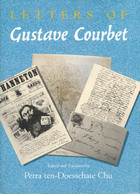 Letters of Gustave Courbet
Gustave Courbet
University of Chicago Press, 1992 The French Realist painter Gustave Courbet (1819-77), a
pivotal figure in the emergence of modern painting, remains
an artist whose interests, attitudes, and friendships are
little understood. A voluminous correspondent, Courbet
himself, through his letters, offers a tantalizing avenue
toward a keener assessment of his character and
accomplishments. In her critical edition of over six hundred
of the artist's letters, Petra ten-Doesschate Chu presents
just such a look at the inner life of the artist; her
unparalleled feat of gathering together all of Courbet's
known letters, many heretofore unpublished and untranslated,
is sure to change our evaluation of Courbet's creativity and
of his place in nineteenth-century French life.
Beginning when Courbet left his provincial home at
eighteen and ending eight days before his death in exile in
Switzerland, this correspondence enables readers to follow
the artist's development from youth to mature artist of
international repute. Addressed to correspondents such as
the poet Charles Baudelaire, the painter Claude Monet, the
writers Champfleury, Victor Hugo, and Théeophile Gautier,
the political theorist Pierre-Joseph Proudhon, and the
politician Jules Simon, the letters offer numerous insights
into Courbet's life and art as well as the cultural and
political activity of his day. In fascinating detail, they
present the artist's relation to the contemporary media, his
deliberate choice of subject matter for Salon paintings, his
preoccupation with photography, and his participation in the
Commune.
Besides collecting, translating, and annotating the
letters, Chu provides an introduction, a chronology,
biographies of persons appearing frequently in the letters,
and a list of paintings and sculptures mentioned in the
letters. Her work is an essential resource of immediate use
to historians of art and culture, political and social
historians, and readers of biography.
Petra ten-Doesschate Chu is professor and head of the
Department of Art and Music at Seton Hall University.
 The Letters of Gustave Flaubert
Gustave Flaubert
Harvard University Press, 1980 Gustave Flaubert wrote to his mistress, Louise Colet: “An author in his book must be like God in the universe, present everywhere and visible nowhere.” In his books, Flaubert sought to observe that principle; but in his many impassioned letters he allowed his feelings to overflow, revealing himself in all of his human complexity. Sensuous, witty, exalted, ironic, grave, analytical, the letters illustrate the artist’s life—and they trumpet his artistic opinions—in an outpouring of uninhibited eloquence.
An acknowledged master of translation, Francis Steegmuller has given us by far the most generous and varied selection of Flaubert’s letters in English. He presents these with an engrossing narrative that places them in the context of the writer’s life and times. We follow Flaubert through his unhappy years at law school, through his tumultuous affair with Louise Colet; we share his days and nights amid the temples and brothels of Egypt, then on to Palestine, Turkey, Greece, and Rome. And the letters chronicle one of the central events in literary history—the conception and composition of what has been called the first modern novel, Madame Bovary. Steegmuller’s selection concludes with Flaubert’s standing trial for immoral writing, Madame Bovary’s immediate popular success, and Baudelaire’s celebration of its psychological and literary power.
Throughout this exposition in Flaubert’s own words of his views on life, literature, and the passions, readers of his novels will be powerfully reminded of the fertility of his genius, and delighted by his poetic enthusiasm. “Let us sing to Apollo as in ancient days,” he wrote to Louise Colet, “and breathe deeply of the fresh cold air of Parnassus; let us strum our guitars and clash our cymbals and whirl like dervishes in the eternal hubbub of forms and ideas!”
Flaubert’s letters are documents of life and art; lovers of literature and of the literary adventure can rejoice in this edition.
 The Letters of Gustave Flaubert
Gustave Flaubert
Harvard University Press, 1980 Having been acquitted of the charge of “outrage of public morals and religion” brought against him upon the publication Madame Bovary, Gustave Flaubert found himself, in 1857, a celebrity and one of the most admired literary men of his day.
Francis Steegmuller’s volume of Flaubert’s letters from the years culminating in that triumph was hailed by the New York Times as “brilliantly edited and annotated…a splendid, intimate account of the development of a writer who changed the nature of the novel.” It went on to garner widespread critical acclaim and to win an American Book Award for Translation.
Now, in the second volume, we see Flaubert in the years of his fame—the years in which he wrote Salammbô, L’Éducation sentimentale, The Temptation of Saint Anthony, Three Tales, and the unfinished Bouvard and Pecuchet. In writing the novels, Flaubert followed his precept, “An author in his book must be like God in the universe, present everywhere and visible nowhere,” but in these letters of his maturity he gives full scope to his feelings and expresses forceful opinions on matters public and private.
We see Flaubert traveling to Tunisia to document the exotic Salammbô, then calling on his own memories and those of his friends to bring to life the Revolution of 1848 and the loves of his hero Frederic Moreau in the pages of L’Éducation sentimentale, which many today consider his greatest novel. Flaubert is taken up by the Second Empire Court of Napoleon III and Eugenie, and becomes a lifelong friend of Princess Mathilde Bonaparte. But the most powerful feminine presence in this volume is the warm, sympathetic George Sand, with whom he maintains a fascinating correspondence for more than ten years. This dialogue on life, letters, and politics between the “two troubadours,” as they called themselves, reveals both of them at their idiosyncratic best.
The deaths of Flaubert’s mother, of his closest friend and mentor, Louis Bouilhet, and of Théophile Gautier, Sainte-Beuve, and other intimates, and Flaubert’s financial ruin at the hands of his beloved niece Caroline and her rapacious husband, make a somber story of the post war years. Despite these and other losses, Flaubert’s last years are brightened by the affection of Guy de Maupassant, Zola, and other younger writers.
Together with Francis Steegmuller’s masterly connecting narrative and essential annotation, these letters, most of which appear here in English for the first time, constitute an intimate and engrossing new biography of the great master of the modern novel.
 The Letters of Henry Adams
Henry Adams
Harvard University Press, 1982 Henry Adams’s letters are one of the vital chronicles of the life of the mind in America. A perceptive analyst of people, events, and ideas, Adams recorded, with brilliance and wit, sixty years of enormous change at home and abroad.
Volume I shows him growing from a high-spirited but self-conscious 20-year-old to a self-assured man of the world. In Washington in the chaotic months before Lincoln’s inauguration, then in London during the war years and beyond, he serves as secretary to his statesman father and is privy to the inner workings of politics and diplomacy. English social life proves as absorbing as affairs of state.
Volume II takes him from his years as a crusading journalist in Grant’s Washington, through his marriage to Clover Hooper and his pioneer work as a history professor at Harvard and editor of the North American Review, to his settling in Washington as a professional historian. There he and his wife, described by Henry James as “one of the two most interesting women in America,” establish the first intellectual salon of the capital. This halcyon period comes to a catastrophic close with Clover’s suicide.
Volume III traces his gradual recovery from the shock of his wife’s death as he seeks distraction in travel—to Japan, to Cuba, and in 1891–92 to the South Seas—a recovery complicated by his falling dangerously in love with Elizabeth Cameron, beautiful young wife of a leading senator. His South Seas letters to Mrs. Cameron are the most brilliant of all.
Fewer than half of Adams’s letters have been published even in part, and earlier collections have been marred by expurgations, mistranscriptions, and editorial deletions. In the six volumes of this definitive edition, readers will have access to a major document of the American past.
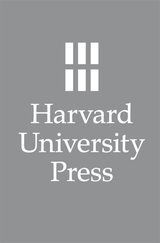 The Letters of Henry Adams
Henry Adams
Harvard University Press Henry Adams’s letters are among the best in the language. They are, in Alfred Kazin’s words, “magnificent, his most spontaneous and freest literary works.” With the completion of this edition, they may well be judged his most significant achievement. “The letters are not a gloss on a life’s work; in a real sense they are his life’s work,” the reviewer for American Literature stated.
We encounter Adams in 1892 at a turning point in his career, at the beginning of the period in which his leading ideas would be crystallized and his major literary works take shape. He had survived the shock of his wife’s suicide and had completed his great History of the Jefferson era, and after his long journey in the South Seas his frustrated passion for Elizabeth Cameron had begun to calm. His wanderlust now took him to the Carolinas and the Rockies, to Mexico, Cuba, Egypt, the Near East, Greece, Italy, central Europe, Russia, and the North Cape. His interest came increasingly to center on the geopolitical present and the medieval past. Prompted by the Panic of 1893, he began an intensive study of the new finance capitalism and the imperial power it created; by the end of the decade he was beginning to foresee the shift of global dominance from Britain to the United States and Russia. Meanwhile a tour of the churches and abbeys of Normandy fired his imagination and led to the absorption in the art and culture of medieval France that would bear fruit in Mont-Saint-Michel and Chartres.
At his home on Lafayette Square, across from the White House, he became an informal adviser to statesmen, John Hay and Theodore Roosevelt among them. Out of his friendly association with scientists and his own study of science came his conviction that the dynamo and radium were bringing a revolution in physics. His germinating ideas about science, technology, and economic power were conveyed in his letters over many years before they were formulated into The Education of Henry Adams, his “Study of Twentieth-Century Multiplicity.”
The Adams who emerges from the letters is far more complex, contradictory, and human than the protagonist of the Education. He writes to women, Mrs. Cameron above all, about politics, economics, and science as well as social news and palace gossip, just as he writes to men about art as well as power. The multiplicity of his interests, his sharp perceptions, eye for telling detail, and passion for generalization, together with his irony and wit, make his letters the engrossing record of an extraordinary life-in-progress and an incomparable commentary upon his age.
 The Letters of Henry Adams
Henry Adams
Harvard University Press Henry Adams’s letters are among the best in the language. They are, in Alfred Kazin’s words, “magnificent, his most spontaneous and freest literary works.” With the completion of this edition, they may well be judged his most significant achievement. “The letters are not a gloss on a life’s work; in a real sense they are his life’s work,” the reviewer for American Literature stated.
We encounter Adams in 1892 at a turning point in his career, at the beginning of the period in which his leading ideas would be crystallized and his major literary works take shape. He had survived the shock of his wife’s suicide and had completed his great History of the Jefferson era, and after his long journey in the South Seas his frustrated passion for Elizabeth Cameron had begun to calm. His wanderlust now took him to the Carolinas and the Rockies, to Mexico, Cuba, Egypt, the Near East, Greece, Italy, central Europe, Russia, and the North Cape. His interest came increasingly to center on the geopolitical present and the medieval past. Prompted by the Panic of 1893, he began an intensive study of the new finance capitalism and the imperial power it created; by the end of the decade he was beginning to foresee the shift of global dominance from Britain to the United States and Russia. Meanwhile a tour of the churches and abbeys of Normandy fired his imagination and led to the absorption in the art and culture of medieval France that would bear fruit in Mont-Saint-Michel and Chartres.
At his home on Lafayette Square, across from the White House, he became an informal adviser to statesmen, John Hay and Theodore Roosevelt among them. Out of his friendly association with scientists and his own study of science came his conviction that the dynamo and radium were bringing a revolution in physics. His germinating ideas about science, technology, and economic power were conveyed in his letters over many years before they were formulated into The Education of Henry Adams, his “Study of Twentieth-Century Multiplicity.”
The Adams who emerges from the letters is far more complex, contradictory, and human than the protagonist of the Education. He writes to women, Mrs. Cameron above all, about politics, economics, and science as well as social news and palace gossip, just as he writes to men about art as well as power. The multiplicity of his interests, his sharp perceptions, eye for telling detail, and passion for generalization, together with his irony and wit, make his letters the engrossing record of an extraordinary life-in-progress and an incomparable commentary upon his age.
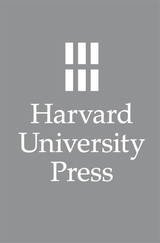 The Letters of Henry Adams
Henry Adams
Harvard University Press Henry Adams’s letters are among the best in the language. They are, in Alfred Kazin’s words, “magnificent, his most spontaneous and freest literary works.” With the completion of this edition, they may well be judged his most significant achievement. “The letters are not a gloss on a life’s work; in a real sense they are his life’s work,” the reviewer for American Literature stated.
We encounter Adams in 1892 at a turning point in his career, at the beginning of the period in which his leading ideas would be crystallized and his major literary works take shape. He had survived the shock of his wife’s suicide and had completed his great History of the Jefferson era, and after his long journey in the South Seas his frustrated passion for Elizabeth Cameron had begun to calm. His wanderlust now took him to the Carolinas and the Rockies, to Mexico, Cuba, Egypt, the Near East, Greece, Italy, central Europe, Russia, and the North Cape. His interest came increasingly to center on the geopolitical present and the medieval past. Prompted by the Panic of 1893, he began an intensive study of the new finance capitalism and the imperial power it created; by the end of the decade he was beginning to foresee the shift of global dominance from Britain to the United States and Russia. Meanwhile a tour of the churches and abbeys of Normandy fired his imagination and led to the absorption in the art and culture of medieval France that would bear fruit in Mont-Saint-Michel and Chartres.
At his home on Lafayette Square, across from the White House, he became an informal adviser to statesmen, John Hay and Theodore Roosevelt among them. Out of his friendly association with scientists and his own study of science came his conviction that the dynamo and radium were bringing a revolution in physics. His germinating ideas about science, technology, and economic power were conveyed in his letters over many years before they were formulated into The Education of Henry Adams, his “Study of Twentieth-Century Multiplicity.”
The Adams who emerges from the letters is far more complex, contradictory, and human than the protagonist of the Education. He writes to women, Mrs. Cameron above all, about politics, economics, and science as well as social news and palace gossip, just as he writes to men about art as well as power. The multiplicity of his interests, his sharp perceptions, eye for telling detail, and passion for generalization, together with his irony and wit, make his letters the engrossing record of an extraordinary life-in-progress and an incomparable commentary upon his age.
 The Letters of Henry Adams
Henry Adams
Harvard University Press Henry Adams’s letters are among the best in the language. They are, in Alfred Kazin’s words, “magnificent, his most spontaneous and freest literary works.” With the completion of this edition, they may well be judged his most significant achievement. “The letters are not a gloss on a life’s work; in a real sense they are his life’s work,” the reviewer for American Literature stated.
We encounter Adams in 1892 at a turning point in his career, at the beginning of the period in which his leading ideas would be crystallized and his major literary works take shape. He had survived the shock of his wife’s suicide and had completed his great History of the Jefferson era, and after his long journey in the South Seas his frustrated passion for Elizabeth Cameron had begun to calm. His wanderlust now took him to the Carolinas and the Rockies, to Mexico, Cuba, Egypt, the Near East, Greece, Italy, central Europe, Russia, and the North Cape. His interest came increasingly to center on the geopolitical present and the medieval past. Prompted by the Panic of 1893, he began an intensive study of the new finance capitalism and the imperial power it created; by the end of the decade he was beginning to foresee the shift of global dominance from Britain to the United States and Russia. Meanwhile a tour of the churches and abbeys of Normandy fired his imagination and led to the absorption in the art and culture of medieval France that would bear fruit in Mont-Saint-Michel and Chartres.
At his home on Lafayette Square, across from the White House, he became an informal adviser to statesmen, John Hay and Theodore Roosevelt among them. Out of his friendly association with scientists and his own study of science came his conviction that the dynamo and radium were bringing a revolution in physics. His germinating ideas about science, technology, and economic power were conveyed in his letters over many years before they were formulated into The Education of Henry Adams, his “Study of Twentieth-Century Multiplicity.”
The Adams who emerges from the letters is far more complex, contradictory, and human than the protagonist of the Education. He writes to women, Mrs. Cameron above all, about politics, economics, and science as well as social news and palace gossip, just as he writes to men about art as well as power. The multiplicity of his interests, his sharp perceptions, eye for telling detail, and passion for generalization, together with his irony and wit, make his letters the engrossing record of an extraordinary life-in-progress and an incomparable commentary upon his age.
 The Letters of Henry James
Henry James
Harvard University Press, 1974 Here at last is the first volume of the long-awaited edition of Henry James letters by the world’s foremost Jamesian scholar, Leon Edel.
James was a superlative letter-writer; his correspondence constitutes one of the greatest self-portraits in all literature. In this edition Edel, respecting James’s view that only the best of a writer’s letters deserve publication, skims the cream of the fifteen thousand letters collected or discovered, many by the biographer himself, since the novelist’s death in 1916. In Volume I, the first of four, he provides a General Introduction and a necessary minimum of annotation, and prefaces each section—Boyhood and Youth; Beginnings; The Grand Tour; A Season in Cambridge; Travel and Opportunity; and The Choice—with an informative account of James’s attitudes and activities during the period in question. The volume closes, appropriately, with James’s decision in 1875, at age thirty-two, to move permanently to Europe.
 The Letters of Henry James
Henry James
Harvard University Press In this, the second volume of Leon Edel's superb edition of the letters, we see Henry James in his thirties, pursuing his writing in Paris and London and finding his first literary successes in Daisy Miller and The Portrait of a Lady. The letters of these years, describing for family and friends in Boston the expatriate's days, reveal the usual wit and sophistication, but there is a new tone: James is relentlessly building a personal career and begins to see himself as a professional writer. Few other letters so fully document the process of an artist in the making.
James was a social success in London: in Mr. Edel's words, "England speedily opened its arms to him, as it does to anyone who is at ease with the world." The letters of this period pull us into the atmosphere of Victorian England, its drawing rooms, manors, and clubs, and James's keen American eyes give us views of this world probably unique in our literary annals. He used these observations to forge his great international theme, the confrontation of the Old and New Worlds.
 The Letters of Henry James
Henry James
Harvard University Press The third volume of Leon Edel’s superb edition of Henry James’s letters finds the novelist settled in Europe and his expatriation complete. The letters of this time reflect the growth of James’s literary and personal friendships and introduce the reader to the frescoed palazzos, Palladian villas, and great estates of the Roseberys, the Rothschilds, the Bostonian-Venetian Curtises, and the Florentine-American Boott circle. In all his travels, James closely observes the social scene and the dilemmas of the human beings within it. During this fruitful period he writes The Bostonians, The Princess Casamassima, The Tragic Muse, and some thirty-five of his finest international tales.
Undermining his success, however, are a devastating series of disappointments. Financial insecurity, an almost paraniod defensiveness following the utter failure of his dramatic efforts, and the deaths of his sister, his friend Robert Louis Stevenson, and his ardent admirer Constance Fenimore Woolson all combine to take him to what he recognizes is the edge of an abyss of personal tragedy.
And yet James endures, and throughtout these trials his letters reveal the flourish, the tongue-in-cheek humor, and the social insight that marked his genius. As Edel writes in his Introduction: “The grand style is there, the amusement at the vanities of this world, the insistence that the great ones of the earth lack the imagination he is called upon to supply, and then his boundless affection and empathy for those who have shown him warmth and feeling.”
In an appendix Mr. Edel presents four remarkable unpublished letters from Miss Woolson to James. These throw light on their ambiguous relationship and on James’s feelings of guilt and shock after her suicide in Venice.
 The Letters of Henry James
Henry James
Harvard University Press This volume, the conclusion of Leon Edel's splendid edition, rounds off a half century of work on James by the noted biographer-critic. In the letters of the novelist's last twenty years a new Henry James is revealed. Edel's generous selection shows us, as he says, a "looser, less formal, less distant" personality, a man writing with greater candor and with more emotional freedom, who "has at last opened himself up to the physical things of life."The decade embracing the turn of the century is the most productive period of James's career. Happily settled in an English country house and now dictating to a typist, he is able to write The Ambassadors, The Wings of the Dove, and The Golden Bowl in three years. The letters show clearly how his fiction turned from his world-famous tales of international society to the life of passion in his last novels.His new friends and correspondents include Conrad, H. G. Wells, Stephen Crane, Edith Wharton, and several young men to whom he writes curious, half-inhibited love letters. Mrs. Wharton, with her chauffered "chariot of fire," introduces him to the thrill of motoring and welcomes him into her cosmopolitan circle; to him she embodies the affluence and driving energy of the America of the Gilded Age. For the first time in over twenty years he revisits his homeland, traveling not only in the East but through the South to Florida and west to California. He is dismayed by the materialism he finds and the changed ways of life.Back in England, he plunges into several projects; for the New York edition of his works he revises the early novels and writes his famous prefaces. His relations with agents and publishers as well as family and friends are fully documented in the letters, as are his trips to the Continent and visits with Edith Wharton in Paris.His last years are darkened by a long siege of nervous ill health and by the death of his beloved brother William. But he carries on, moves back to London, and continues to work. Among the most eloquent of all his letters are those describing his anguished reaction to the Great War. To show his allegiance to the Allied cause, he becomes a British citizen, six months before his death. The volume concludes with his "final and fading words" dictated on his deathbed.
 The Letters of Henry Wadsworth Longfellow
Henry Wadsworth Longfellow
Harvard University Press These final volumes of Andrew Hilen's admired edition bring together the extant Longfellow letters of 1866–1882, most of which have never before been published. During this period Longfellow's reputation reached its zenith; no American poet before or since has enjoyed a popular following more varied or numerous. Here we see him expanding his already enormous influence with the publication of Poems of Places, a poetic translation of Dante's Divine Comedy, and other works. The letters reveal him as a hard-working writer and editor, as an astute businessman who nevertheless gave freely of his gains to friends and causes, and as an often lonely and struggling individual.
They provide, as well, a view of Longfellow's world—the American literary scene, the publishing business, academic life, politics, religion, and the Reconstruction period. Hilen includes in Volume VI a comprehensive index for the entire six-volume edition, which represents a social document of the times.
 The Letters of Henry Wadsworth Longfellow
Henry Wadsworth Longfellow
Harvard University Press, 1966 Volumes III and IV of this edition bring together all the extant letters of Henry Wadsworth Longfellow for the period 1844-1865, most of which have never before been published. These letters carry Longfellow through the remarkable period when he was gaining renown both at home and abroad as the poet laureate of America. His influence swelled with the publication of such works as Evangeline, The Song of Hiawatha, The Courtship of Miles Standish, and Part One of Tales of a Wayside Inn. During these twenty-two years his correspondence proliferated, reaching at least 4000 letters, of which 1500 are known to have survived and are reproduced in these two volumes.
The letters offer further insight not only into the poet's personal life but into his time as well. They document the manifold burdens placed on a popular man of letters, from responding to pleas for advice from unpublished poets to dealing with critical attacks on his own poetry to warding off the importunities of scores of admirers.
The letters further reveal a political interest not hitherto suspected in Longfellow. His exchanges with Senator Charles Sumner shed light on the political dramas of the day, including presidential elections, the Mexican War, the slavery controversy, the founding of the Republican party, and the Civil War. From a social viewpoint, the letters provide an absorbing account of the settled and elegant life of a member of the Boston-Cambridge upper class, into which Longfellow had moved with his marriage to Frances Appleton. They also reveal him as a warm-hearted family man, devoted to his wife and children and solicitous for the welfare of an unhappy brother, a widowed sister, and two wayward nephews.
The letters of Volume III span the publication of five volumes of verse, three anthologies, and a novel. They document the numerous private events that vied with literary production for Longfellow's attention, such as the birth of his six children and the complicated summer migrations to Nahant or Newport. They also follow Longfellow through his resignation from the liaryard professorship in 1854, which was prompted by a desire to devote himself more fully to writing.
Andrew Hilen, who is author of Longfellow and Scandinavia and Professor of English at the University of Washington, has included numerous contemporary photographs to illustrate the letters. His scrupulous annotations supply relevant identifications of individuals, explain allusions, and provide information regarding the addresses of letters, endorsements, postmarks, and the location of manuscripts.
 The Letters of Henry Wadsworth Longfellow
Henry Wadsworth Longfellow
Harvard University Press Volumes I and II of this projected multi-volume edition bring together for the first time all the extant letters of Henry Wadsworth Longfellow for the period 1814–1843. Most of the letters, which are of prime importance in America’s cultural history, have never before been published. The remainder that have appeared in print frequently did so in emasculated form and in a wide variety of books and journals. In addition to restoring the complete texts of this correspondence, editor Andrew Hilen has provided a distinguished General Introduction in Volume I and prefatory comments at the head of Parts I–IV of the two volumes. Scrupulous annotations supply relevant identifications of individuals, explain allusions, and present information regarding the addresses of letters, endorsements, postmarks, and the location of manuscripts.
Readers of the letters of this period will follow Longfellow through his career at Bowdoin College, both as an undergraduate and as a professor, on his lengthy sojourns in Europe, and through his first years as Smith Professor of Modern Languages at Harvard. They offer a wealth of material that is available nowhere else on many of the leading issues of his day, on its literary and scholarly scene, and most important, on the development of the poet himself. Longfellow emerges from these pages as far more than the mild and studied figure that tradition has made of him.
The Letters of John Greenleaf Whittier: Vols. 1, 2, and 3
John Greenleaf Whittier
Harvard University Press, 1975 These letters of a man deeply concerned about his country, directly involved in political action, and torn, as the Civil War approached, by the conflict between his abolitionist zeal and his Quaker pacifism—letters here collected for the first time and many of them hitherto unpublished—shatter the stereotype of Whittier as “the good gray poet.” The many letters to such figures as John Quincy Adams, Charles Sumner, and William Lloyd Garrison form a detailed record of the abolitionist movement from its inception to its merging with the Free Soil party in the 1850s. The first two volumes reproduce all the extant letters from 1828 to 1860, with full annotations. The last volume is selective, excluding several thousand perfunctory items and including only the historically or biographically interesting letters of the last three decades of the poet's life.
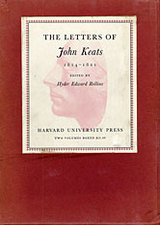 The Letters of John Keats, 1814-1821
John Keats
Harvard University Press, 1999 For many years one of the most serious needs in the literary world has been for a definitive edition of the letters of Keats. Now one of the world's foremost Keats authorities, Hyder Edward Rollins of Harvard, has prepared a completely new edition of all the extant letters, with an extensive listing of the letters presumed missing.
With impeccable scholarship and total faithfulness to the originals, Professor Rollins here is able to redate and rearrange sixty of the letters. Through full documentation for each letter, understanding of the content is considerably amplified both through the correction of errors, and through application of the results of the editor's life-long study of Keats and his work. In addition to many letters from Keats' relatives and friends, the present work includes seven letters or other documents signed or written by Keats that appear in no English edition, and also new texts of seven other letters by the poet. Furthermore, all the letters known only in Woodhouse's transcripts and in Jeffrey's transcripts are here printed for the first time exactly as Woodhouse and Jeffrey copied them.
The letters of Joseph Severn describing the last illness and death of Keats are given in their entirety. These letters are invaluable historically and biographically, and are also exceptionally good reading.
 The Letters of John Keats, 1814-1821
John Keats
Harvard University Press For many years one of the most serious needs in the literary world has been for a definitive edition of the letters of Keats. Now one of the world's foremost Keats authorities, Hyder Edward Rollins of Harvard, has prepared a completely new edition of all the extant letters, with an extensive listing of the letters presumed missing.
With impeccable scholarship and total faithfulness to the originals, Professor Rollins here is able to redate and rearrange sixty of the letters. Through full documentation for each letter, understanding of the content is considerably amplified both through the correction of errors, and through application of the results of the editor's life-long study of Keats and his work. In addition to many letters from Keats' relatives and friends, the present work includes seven letters or other documents signed or written by Keats that appear in no English edition, and also new texts of seven other letters by the poet. Furthermore, all the letters known only in Woodhouse's transcripts and in Jeffrey's transcripts are here printed for the first time exactly as Woodhouse and Jeffrey copied them.
The letters of Joseph Severn describing the last illness and death of Keats are given in their entirety. These letters are invaluable historically and biographically, and are also exceptionally good reading.
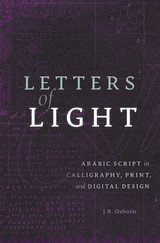 Letters of Light: Arabic Script in Calligraphy, Print, and Digital Design
J.R. Osborn
Harvard University Press, 2017 Arabic script remains one of the most widely employed writing systems in the world, for Arabic and non-Arabic languages alike. Focusing on naskh—the style most commonly used across the Middle East—Letters of Light traces the evolution of Arabic script from its earliest inscriptions to digital fonts, from calligraphy to print and beyond. J. R. Osborn narrates this storied past for historians of the Islamic and Arab worlds, for students of communication and technology, and for contemporary practitioners.
The partnership of reed pen and paper during the tenth century inaugurated a golden age of Arabic writing. The shape and proportions of classical calligraphy known as al-khatt al-mansub were formalized, and variations emerged to suit different types of content. The rise of movable type quickly led to European experiments in printing Arabic texts. Ottoman Turkish printers, more sensitive than their European counterparts to the script’s nuances, adopted movable type more cautiously. Debates about “reforming” Arabic script for print technology persisted into the twentieth century.
Arabic script continues to evolve in the digital age. Programmers have adapted it to the international Unicode standard, greatly facilitating Arabic presence online and in word processing. Technology companies are investing considerable resources to facilitate support of Arabic in their products. Professional designers around the world are bringing about a renaissance in the Arabic script community as they reinterpret classical aesthetics and push new boundaries in digital form.
The Letters of Machiavelli
Niccolò Machiavelli
University of Chicago Press, 1988 This collection of the most brilliant and characteristic letters of Niccolò Machiavelli displays the vital and penetrating mind of the man who wrote the first work of modern political science. These letters, which reveal Machiavelli's critical intelligence, sense of humor, and elegant sense, are our chief source of information about his personal life. As such, they will serve as a vivid introduction to the personalities and events of the most turbulent period of the Renaissance, and they will also enlighten people who have been fascinated by the political thinker who wrote The Prince and The Discourses on Livy.
The Letters of Manuel II Palaeologus
George T. Dennis
Harvard University Press, 1977 Of the nearly ninety emperors who ruled in Constantinople, Manuel II Palaeologus (r. 1391–1425) was one of the most sympathetic as a human being and one of the most gifted as a statesman. A man of broad intellectual interests, he was also dedicated to his God-given task of preserving what remained of the Byzantine Empire when he came to power. This conflict is reflected in his letters, written in such distant places as Ankara, Paris, and London. The correspondence provides new insights into his reign and enable us to better understand the emperor himself, his friends, and the times in which they lived.
 The Letters of Mercurius
Mercurius
Harvard University Press Who is Mercurius Oxoniensis? The first of his brilliantly witty letters mysteriously appeared, apparently without the authority of the writer, in the Spectator towards the end of 1968. Their candid, penetrating and caustic commentary on personalities and events (considered by some to verge on indiscretion) indicate inside information and sources. They caused an instant stir leading to some wild conjecture as to their authorship in the columns of The Times, in the University Common Rooms and in literary and academic circles. An authorized, accurately transcribed, and annotated publication of these Letters (up to June 1970) is now possible; but the anonymity remains. It is not difficult to see why, because Mercurius names names and spares no reputation: he is altogether too well informed for his own good.
According to the Editor of the Letters, the Oxford Mercurius "is a college tutor in one of the colleges in Turl Street; a bachelor, of declining years and uncertain health; somewhat old-fashioned in his views, and in his language; fond of his glass of port or hock, and teaches, inter alia, the Politics of Aristotle. He is slightly crotchety, but generally in good humour by his family circle and friends."
But what makes Mercurius’s achievement unique is that he has succeeded in fashioning from the English of the seventeenth century, the language both of John Aubrey, the great gossip, and of the racist pamphleteers, the perfect instrument for a sustained and sparkling present-day chronicle of the more noteworthy events in university life, and in particular of the "student stirs" that first prompted him to put quill to paper. Indeed in all the millions of words that have been written about student unrest in the modern world, there has been nothing more perceptive than the devastatingly entertaining observations of old Mercurius on the "fanatiques" and those who confront them.
 The Letters of Mina Harker
Dodie Bellamy; with a new Forward by Dennis Cooper
University of Wisconsin Press, 2004 In Dodie Bellamy's imagined "sequel" to Bram Stoker's fin de siècle masterpiece Dracula, Van Helsing's plain Jane secretarial adjunct, Mina Harker, is recast as a sexual, independent woman living in San Francisco in the 1980s. The vampire Mina Harker, who possesses the body of author Dodie Bellamy, confesses the most intimate details of her relationships with four vastly different men through past letters. Simultaneously, a plague is let loose in San Francisco-the plague of AIDS.
Bigger-than-life, half goddess, half Bette Davis, Mina sends letter after letter to friends and co-conspirators, holding her reader captive through a display of illusion and longing. Juggling quivering vulnerability on one hand and gossip on the other, Mina spoofs and consumes and spews back up demented reembodiments of trash media and high theory alike. It's all fodder for her ravenous libido and "a messy ambiguous place where pathology meets pleasure." Sensuous and captivating, The Letters of Mina Harker describes one woman's struggles finding the right words to explain her desires and fears without confining herself to one identity.
The Letters of Mrs. Gaskell
Elizabeth Cleghorn (Stevenson) Gaskell
Harvard University Press Elizabeth Gaskell not only was a significant figure in her own right but moved in the center of the Victorian literary world. The list of her correspondents is a roster of many of the most distinguished literary names of mid-nineteenth-century England. This volume contains all of her available extant letters written from about 1832 to 1865; they have been transcribed from the originals whenever possible. The collection is chronologically arranged, except for a short series of letters for which dates are unobtainable, and a reference system allows the reader to follow letters to any particular writer. A full index frequently includes brief biographical sketches.
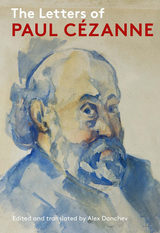 The Letters of Paul Cézanne
Alex Danchev
J. Paul Getty Trust, The, 2013 Revered and misunderstood by his peers and lauded by later generations as the father of modern art, Paul Cézanne (1839-1906) has long been a subject of fascination for artists and art lovers, writers, poets, and philosophers. His life was a ceaseless artistic quest, and he channeled much of his wide-ranging intellect and ferocious wit into his letters. Punctuated by exasperated theorizing and philosophical reflection, outbursts of creative ecstasy and melancholic confession, the artist’s correspondence reveals both the heroic and all-toohuman qualities of a man who is indisputably among the pantheon of all-time greats.
This new translation of Cézanne’s letters includes more than twenty that were previously unpublished and reproduces the sketches and caricatures with which Cézanne occasionally illustrated his words. The letters shed light on some of the key artistic relationships of the modern period—about one third of Cézanne’s more than 250 letters are to his boyhood companion Émile Zola, and he communicated extensively with Camille Pissarro and the dealer Ambroise Vollard. The translation is richly annotated with explanatory notes, and, for the first time, the letters are cross-referenced to the current catalogue raisonné. Numerous inaccuracies and archaisms in the previous English edition of the letters are corrected, and many intriguing passages that were unaccountably omitted have been restored. The result is a publishing landmark that ably conveys Cézanne’s intricacy of expression.
Letters of Peter Abelard, Beyond the Personal
Peter Abelard
Catholic University of America Press, 2008 Comprehensive and learned translation of these texts affords insight into Abelard's thinking over a much longer sweep of time and offers snapshots of the great twelfth-century philosopher and theologian in a variety of contexts.
The Letters of Peter the Venerable
Peter the Venerable
Harvard University Press Giles Constable presents the first critical edition of the letters of Peter the Venerable, abbot of Cluny from 1122 to 1156, to appear since the first printed edition was published in 1522. The text, based upon a comparison of all known manuscripts, is printed in Volume I and is an important source for the history of the first half of the twelfth century. An introduction, appendices, and notes which touch broadly upon the ecclesiastical, intellectual, and political history of the period are provided in Volume II.
The Letters of Peter the Venerable
Peter the Venerable
Harvard University Press Giles Constable presents the first critical edition of the letters of Peter the Venerable, abbot of Cluny from 1122 to 1156, to appear since the first printed edition was published in 1522. The text, based upon a comparison of all known manuscripts, is printed in Volume I and is an important source for the history of the first half of the twelfth century. An introduction, appendices, and notes which touch broadly upon the ecclesiastical, intellectual, and political history of the period are provided in Volume II.
The Letters of Peter the Venerable
Peter the Venerable
Harvard University Press Giles Constable presents the first critical edition of the letters of Peter the Venerable, abbot of Cluny from 1122 to 1156, to appear since the first printed edition was published in 1522. The text, based upon a comparison of all known manuscripts, is printed in Volume I and is an important source for the history of the first half of the twelfth century. An introduction, appendices, and notes which touch broadly upon the ecclesiastical, intellectual, and political history of the period are provided in Volume II.
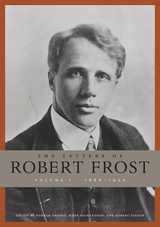 The Letters of Robert Frost
Robert Frost
Harvard University Press, 2014 One of the acknowledged giants of twentieth-century American literature, Robert Frost was a public figure much celebrated in his day. Although his poetry reached a wide audience, the private Frost—pensive, mercurial, and often very funny—remains less appreciated. Following upon the publication of Frost’s notebooks and collected prose, The Letters of Robert Frost is the first major edition of the poet’s written correspondence. The hundreds of previously unpublished letters in these annotated volumes deepen our understanding and appreciation of this most complex and subtle of verbal artists.
Volume One traverses the years of Frost’s earliest poems to the acclaimed collections North of Boston and Mountain Interval that cemented his reputation as one of the leading lights of his era. The drama of his personal life—as well as the growth of the audacious mind that produced his poetry—unfolds before us in Frost’s day-to-day missives. These rhetorical performances are at once revealing and tantalizingly evasive about relationships with family and close friends, including the poet Edward Thomas. We listen in as Frost defines himself against contemporaries Ezra Pound and William Butler Yeats, and we witness the evolution of his thoughts about prosody, sound, style, and other aspects of poetic craft.
In its literary interest and sheer display of personality, Frost’s correspondence is on a par with the letters of Emily Dickinson, Robert Lowell, and Samuel Beckett. The Letters of Robert Frost holds hours of pleasurable reading for lovers of Frost and modern American poetry.
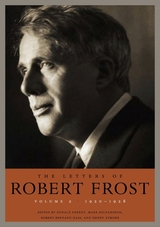 The Letters of Robert Frost
Robert Frost
Harvard University Press, 2016 The Letters of Robert Frost, Volume 2: 1920–1928 is the second installment of Harvard’s five-volume edition of the poet’s correspondence. Nearly three hundred letters in the critically-acclaimed first volume had never before been collected; here, close to four hundred are gathered for the first time. Volume 2 includes letters to some 160 correspondents: family and friends; colleagues, fellow writers, visual artists, editors, and publishers; educators of all kinds; farmers, librarians, and admirers.
In the years covered here, publication of Selected Poems, New Hampshire, and West-Running Brook enhanced Frost’s stature in America and abroad, and the demands of managing his career—as public speaker, poet, and teacher—intensified. A good portion of the correspondence is devoted to Frost’s appointments at the University of Michigan and Amherst College, through which he played a major part in staking out the positions poets would later hold in American universities. Other letters show Frost helping to shape the Bread Loaf School of English and its affiliated Writers’ Conference. We encounter him discussing his craft with students and fostering the careers of younger poets. His observations (and reservations) about educators are illuminating and remain pertinent. And family life—with all its joys and sorrows, hardships and satisfactions—is never less than central to Frost’s concerns.
Robert Frost was a masterful prose stylist, often brilliant and always engaging. Thoroughly annotated and accompanied by a biographical glossary, chronology, and detailed index, these letters are both the record of a remarkable literary life and a unique contribution to American literature.
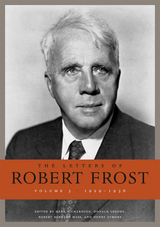 The Letters of Robert Frost
Robert Frost
Harvard University Press, 2021 The third installment of Harvard’s five-volume edition of Robert Frost’s correspondence.
The Letters of Robert Frost, Volume 3: 1929–1936 is the latest installment in Harvard’s five-volume edition of the poet’s correspondence. It presents 601 letters, of which 425 are previously uncollected. The critically acclaimed first volume, a Times Literary Supplement Book of the Year, included nearly 300 previously uncollected letters, and the second volume 350 more.
During the period covered here, Robert Frost was close to the height of his powers. If Volume 2 covered the making of Frost as America’s poet, in Volume 3 he is definitively made. These were also, however, years of personal tribulation. The once-tight Frost family broke up as marriage, illness, and work scattered the children across the country. In the case of Frost’s son Carol, both distance and proximity put strains on an already fractious relationship. But the tragedy and emotional crux of this volume is the death of Frost’s youngest daughter, Marjorie. Frost’s correspondence from those dark days is a powerful testament to the difficulty of honoring the responsibilities of a poet’s eminence while coping with the intensity of a parent’s grief.
Volume 3 also sees Frost responding to the crisis of the Great Depression, the onset of the New Deal, and the emergence of totalitarian regimes in Europe, with wit, canny political intelligence, and no little acerbity. All the while, his star continues to rise: he wins a Pulitzer for Collected Poems in 1931 and will win a second for A Further Range, published in 1936, and he is in constant demand as a public speaker at colleges, writers’ workshops, symposia, and dinners. Frost was not just a poet but a poet-teacher; as such, he was instrumental in defining the public functions of poetry in the twentieth century. In the 1930s, Frost lived a life of paradox, as personal tragedy and the tumults of politics interwove with his unprecedented achievements.
Thoroughly annotated and accompanied by a biographical glossary and detailed chronology, these letters illuminate a triumphant and difficult period in the life of a towering literary figure.
 The Letters of Robert Giroux and Thomas Merton
Patrick Samway, S.J.
University of Notre Dame Press, 2015 From the time they first met as undergraduates at Columbia College in New York City in the mid-1930s, the noted editor Robert Giroux (1914–2008) and the Trappist monk and writer Thomas Merton (1915–1968) became friends. The Letters of Robert Giroux and Thomas Merton capture their personal and professional relationship, extending from the time of the publication of Merton's 1948 best-selling spiritual autobiography, The Seven Storey Mountain, until a few months before Merton's untimely death in December 1968. As editor-in-chief at Harcourt, Brace & Company and then at Farrar, Straus & Giroux, Giroux not only edited twenty-six of Merton's books but served as an adviser to Merton as he dealt with unexpected problems with his religious superiors at the Abbey of Our Lady of Gethsemani in Kentucky, as well as those in France and Italy.
These letters, arranged chronologically, offer invaluable insights into the publishing process that brought some of Merton's most important writings to his readers. Patrick Samway, S.J., had unparalleled access not only to the materials assembled here but to Giroux's unpublished talks about Merton, which he uses to his advantage, especially in his beautifully crafted introduction that interweaves the stories of both men with a chronicle of their personal and collaborative relationship. The result is a rich and rewarding volume, which shows how Giroux helped Merton to become one of the greatest spiritual writers of the twentieth century.
"This volume provides Thomas Merton readers with a unique perspective on his development as a published author and a deepened appreciation of Robert Giroux's role in fostering that development. The book is both a lively and enjoyable read and a significant resource for students and scholars researching various aspects of Merton's prolific writing career. It will lead to new perspectives on and to a more nuanced understanding of the development of Merton's wide-ranging interests in monastic life and religious renewal, in social and political issues, in interreligious dialogue and literary criticism, and in numerous other fields." —Patrick F. O'Connell, editor of Thomas Merton: Selected Essays
"The Letters of Robert Giroux and Thomas Merton is an important historic record of the emergence and development of one of the great spiritual writers of the twentieth century and of his long friendship and working relationship with one of the great editors of the time. In these letters, carefully and unobtrusively edited and annotated by Patrick Samway, S.J., we see the ups and downs of Merton’s literary affairs against the background of the rapid changes taking place both in the church and in the world during these years. With the advent of email and the demise of the art of letter writing, this book is a testament to a fast disappearing era and the immense value to be found in the literary and historical records contained in such exchanges." —Paul M. Pearson, director, Thomas Merton Center
“Robert Giroux, a great editor and publisher, was also a great friend, and Thomas Merton's correspondence with him—steady, tight in focus, rich in detail, frankly affectionate—makes clear how fully editing and publishing, for Giroux, was an act of friendship. That is no surprise. The surprise is in seeing, through these letters, how deeply Merton's vast and various body of work was grounded in friendship—in the desire to share all that he had come to know with the people he loved.” —Paul Elie, author of The Life You Save May Be Your Own
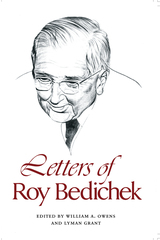 Letters of Roy Bedichek
Edited by William A. Owens and Lyman Grant
University of Texas Press, 1985 Although Roy Bedichek published less than his more famous friends J. Frank Dobie and Walter Prescott Webb, he wrote voluminously and, many say, with more distinction than the others. In addition to his four published books, Bedichek produced a great number of letters through which he communicated his broad interests and deep learning to a wide variety of correspondents. Prefaced by a biographical sketch, this volume presents a collection of Bedichek letters that give us an insight into his literary and creative development—from his earliest years through his career at the University of Texas and on into his later years. They include letters to his closest associates, J. Frank Dobie and Walter Prescott Webb, and to many old friends, such as William A. Owens, John A. Lomax, and John Henry Faulk. Also included is Bedichek's correspondence with other contemporaries, not all old friends, among them Texas Governor James Ferguson, the recipient of some of Bedichek's most trenchant criticism. Throughout this collection, Bedichek's sparkling wit and profound learning are evident as he discusses his favorite subjects, among them ecology, education, literature, politics, and history, frequently related to Texas. When Roy Bedichek gave his collection of letters to the Barker Collection in the University of Texas Library, he designated William A. Owens as the authorized editor of the letters, with the restriction that none of them be published until seven years following his death, which came in 1959.
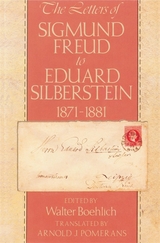 The Letters of Sigmund Freud to Eduard Silberstein, 1871-1881
Sigmund Freud
Harvard University Press, 1990 When Sigmund Freud was nearly seventy and reflecting upon his life, he noted in Selbstdarstellung that during his youth he was consumed with a passion for knowledge that had more to do with human relationships than with natural objects. This collection of nearly eighty letters, written by Freud to his boyhood chum Eduard Silberstein, attests to that earlier, more whimsical life and to the existence of a deeply sensitive, observant youth.
The letters were composed over a period of ten years during which Freud and Silberstein attended secondary school and later the university in Vienna. They are the earliest primary source available on Freud's childhood and the only surviving documentation of his adolescence. Written in a witty, playful, and sometimes sanctimonious style, the letters bring to light a panoply of public and private interests: Freud's attitudes toward Bismarck and social democracy, his philosophical studies and professional leanings, as well as the innocent assault of first love, his earliest sexual stirrings, and his musings on the differences between men and women. What emerges in these letters is the special nature of this adolescent friendship, which was characterized by its own private mythology, code, and membership in an exclusive secret society invented by the two young correspondents. These letters sketch a unique portrait of Freud's youth. They will be a rich resource for scholars and all those interested in Sigmund Freud's formative years.
 The Letters of St. Patrick and Early Patrician Literature
Philip Freeman
Catholic University of America Press The two fifth-century letters of St. Patrick are the earliest records we have of Christianity in Ireland. Written in Latin in his later years, they are an intimate and revealing look into the life and world of a man who was among the first to spread the Gospel to a land beyond the Roman Empire. Both Patrick's Letter to the Soldiers of Coroticus and his Confession detail his many admitted failings and insecurities but also his passionate faith in God and his mission to the Irish. These letters are presented in this volume with both the Latin originals and translation along with other key texts of early Patrician literature, including Muirchu's Life of St. Patrick, Tírechán's Journey of St. Patrick, The First Synod of St. Patrick, The Hymn of St. Secundinus, and the Old Irish St. Patrick's Breastplate. It includes a detailed introduction, commentary, notes, and other useful tools, along with a complete bibliography. The Letters of St. Patrick and Early Patrician Literature brings together for the first time in a single volume the most important works of the Patrician tradition and allows students and scholars from many different fields the opportunity to explore these rich texts.
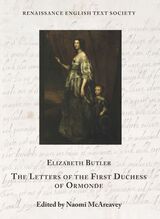 The Letters of the First Duchess of Ormonde
Elizabeth Butler
Iter Press, 2022 This volume is the first to bring together the entire extant correspondence of one of the most significant women in early modern Ireland, Elizabeth Butler, first Duchess of Ormonde. She was the wife of James Butler, twelfth Earl and first Duke of Ormonde, who, as Ireland’s only duke and three times its lord lieutenant, was a figure of considerable importance in seventeenth-century Ireland. But far from being overshadowed by her powerful husband, Butler was a person of significant power and influence in her own right. Descended from the tenth Earl of Ormonde, she brought a hefty portion of the Ormonde estate to the marriage. As Countess, Marchioness, then Duchess of Ormonde, as well as three times vicereine and a high-status courtier, she sat at the pinnacle of Irish and English society, unmatched by any other Irish woman of the period in terms of her wealth, social standing, and power. Her surviving correspondence reveals her importance within the Ormonde-Butler family and in the social, cultural, and political life of seventeenth-century Ireland.
The volume comprises more than three hundred letters written by Ormonde to her husband and family, agents and servants, and friends and clients. Spanning six decades, these letters are meticulously transcribed, edited, and annotated, and the volume includes a substantial scholarly introduction, family trees, a glossary, and other resources.
The Letters of the Republic: Publication and the Public Sphere in Eighteenth-Century America
Michael Warner
Harvard University Press, 1990 The subject of Michael Warner’s book is the rise of a nation. America, he shows, became a nation by developing a new kind of reading public, where one becomes a citizen by taking one’s place as writer or reader. At heart, the United States is a republic of letters, and its birth can be dated from changes in the culture of printing in the early eighteenth century. The new and widespread use of print media transformed the relations between people and power in a way that set in motion the republican structure of government we have inherited. Examining books, pamphlets, and circulars, he merges theory and concrete analysis to provide a multilayered view of American cultural development.
 The Letters of Theodore Roosevelt
Theodore Roosevelt
Harvard University Press The Letters of Theodore Roosevelt constitute a major contribution to the field of American history and literature. At the same time, they present an autobiography of matchless candor and vitality. They are at once a mine of information for the historian, a case study in astute and vigorous political leadership, and a delight to the general reader. All the letters needed to reveal Roosevelt's thought and action in his public and private life are included, with appropriate editorial comment; and each is printed in its entirety.
With the addition of this final installment, about 6,000 letters will have been published out of the 100,000 which Theodore Roosevelt wrote between 1868 (when he was 10) and the day of his death in January, 1919. During the last ten years of his life Roosevelt plunged into the African jungle; he visited Kaiser Wilhelm II; he led the Progressive Movement, and as a Bull Moose was defeated in 1912—permitting Woodrow Wilson to defeat William Howard Taft for the Presidency. Then, explorer once again, he escaped with his life from the wilds of Brazil, campaigned for United States' participation in World War One, and died peacefully as his cousin was on the threshold of a dynamic career.
Theodore Roosevelt's letters are a treasury of information about the issues, the people, and the temper of his period. Here are available documents which tell of his thought and action in all the major and many of the minor undertakings of his public and private life. Each letter is printed in its entirety. Both in content and presentation, The Letters of Theodore Roosevelt constitute a contribution to the field of American history and literature whose value can hardly be exaggerated. At the same time they present an autobiography of matchless candor and vitality.
The Letters of Theodore Roosevelt
Theodore Roosevelt
Harvard University Press The letters of Theodore Roosevelt constitute a major contribution to the field of American history and literature. At the same time, they present an autobiography of matchless candor and vitality. They are at once a mine of information for the historian, a case study in astute and vigorous political leadership, and a delight to the general reader. All the letters needed to reveal Roosevelt’s thought and action in his public and private life are included, with appropriate editorial comment; and each is printed in its entirety.
 The Letters of Theodore Roosevelt
Theodore Roosevelt
Harvard University Press The Letters of Theodore Roosevelt constitute a major contribution to the field of American history and literature. At the same time, they present an autobiography of matchless candor and vitality. They are at once a mine of information for the historian, a case study in astute and vigorous political leadership, and a delight to the general reader. All the letters needed to reveal Roosevelt's thought and action in his public and private life are included, with appropriate editorial comment; and each is printed in its entirety.
With the addition of this final installment, about 6,000 letters will have been published out of the 100,000 which Theodore Roosevelt wrote between 1868 (when he was 10) and the day of his death in January, 1919. During the last ten years of his life Roosevelt plunged into the African jungle; he visited Kaiser Wilhelm II; he led the Progressive Movement, and as a Bull Moose was defeated in 1912—permitting Woodrow Wilson to defeat William Howard Taft for the Presidency. Then, explorer once again, he escaped with his life from the wilds of Brazil, campaigned for United States' participation in World War One, and died peacefully as his cousin was on the threshold of a dynamic career.
Theodore Roosevelt's letters are a treasury of information about the issues, the people, and the temper of his period. Here are available documents which tell of his thought and action in all the major and many of the minor undertakings of his public and private life. Each letter is printed in its entirety. Both in content and presentation, The Letters of Theodore Roosevelt constitute a contribution to the field of American history and literature whose value can hardly be exaggerated. At the same time they present an autobiography of matchless candor and vitality.
The Letters of Theodore Roosevelt
Theodore Roosevelt
Harvard University Press The letters of Theodore Roosevelt constitute a major contribution to the field of American history and literature. At the same time, they present an autobiography of matchless candor and vitality. They are at once a mine of information for the historian, a case study in astute and vigorous political leadership, and a delight to the general reader. All the letters needed to reveal Roosevelt’s thought and action in his public and private life are included, with appropriate editorial comment; and each is printed in its entirety.
The Letters of Theodore Roosevelt
Theodore Roosevelt
Harvard University Press The Letters of Theodore Roosevelt constitute a major contribution to the field of American history and literature. At the same time, they present an autobiography of matchless candor and vitality. They are at once a mine of information for the historian, a case study in astute and vigorous political leadership, and a delight to the general reader. All the letters needed to reveal Roosevelt's thought and action in his public and private life are included, with appropriate editorial comment; and each is printed in its entirety.
In the letters of 1901–1905, Roosevelt consolidates his position as President and party leader, settles the coal strike, deals with the politics of the Panama Canal, expands the Navy, extends the sphere of American interests abroad, achieves the Presidency in his own right, and works with the Russians and the Japanese to make the Peace in Portsmouth.
 The Letters of Theodore Roosevelt
Theodore Roosevelt
Harvard University Press The Letters of Theodore Roosevelt constitute a major contribution to the field of American history and literature. At the same time, they present an autobiography of matchless candor and vitality. They are at once a mine of information for the historian, a case study in astute and vigorous political leadership, and a delight to the general reader. All the letters needed to reveal Roosevelt's thought and action in his public and private life are included, with appropriate editorial comment; and each is printed in its entirety.
In the letters of 1905–1909, Roosevelt’s “big stick” carries increasing weight at home and abroad. These are the years of the fleet’s cruise around the world, of trust-busting and railroad regulation and currency control, and the building of the Panama Canal. They include the Panic of 1907, “Nature Faking,” conservation, the choice of a successor, and the bitter conflict between President and Congress in the closing days of the administration.
The Letters of Theodore Roosevelt
Theodore Roosevelt
Harvard University Press The Letters of Theodore Roosevelt constitute a major contribution to the field of American history and literature. At the same time, they present an autobiography of matchless candor and vitality. They are at once a mine of information for the historian, a case study in astute and vigorous political leadership, and a delight to the general reader. All the letters needed to reveal Roosevelt's thought and action in his public and private life are included, with appropriate editorial comment; and each is printed in its entirety.
In the letters of 1901–1905, Roosevelt consolidates his position as President and party leader, settles the coal strike, deals with the politics of the Panama Canal, expands the Navy, extends the sphere of American interests abroad, achieves the Presidency in his own right, and works with the Russians and the Japanese to make the Peace in Portsmouth.
 The Letters of Theodore Roosevelt
Theodore Roosevelt
Harvard University Press The Letters of Theodore Roosevelt constitute a major contribution to the field of American history and literature. At the same time, they present an autobiography of matchless candor and vitality. They are at once a mine of information for the historian, a case study in astute and vigorous political leadership, and a delight to the general reader. All the letters needed to reveal Roosevelt's thought and action in his public and private life are included, with appropriate editorial comment; and each is printed in its entirety.
In the letters of 1905–1909, Roosevelt’s “big stick” carries increasing weight at home and abroad. These are the years of the fleet’s cruise around the world, of trust-busting and railroad regulation and currency control, and the building of the Panama Canal. They include the Panic of 1907, “Nature Faking,” conservation, the choice of a successor, and the bitter conflict between President and Congress in the closing days of the administration.
The Letters of Theodore Roosevelt
Theodore RooseveltSelected and Edited by Elting E. MorisonJohn M. Blum, Associate EditorJohn J. Buckley, Copy Editor
Harvard University Press The Letters of Theodore Roosevelt constitute a major contribution to the field of American history and literature. At the same time, they present an autobiography of matchless candor and vitality. They are at once a mine of information for the historian, a case study in astute and vigorous political leadership, and a delight to the general reader. All the letters needed to reveal Roosevelt's thought and action in his public and private life are included, with appropriate editorial comment; and each is printed in its entirety.
 The Letters of Theodore Roosevelt
Theodore RooseveltSelected and Edited by Elting E. MorisonJohn M. Blum, Associate EditorAlfred D. Chandler, Jr., Assistant EditorSylvia Rice, Copy Editor
Harvard University Press The Letters of Theodore Roosevelt constitute a major contribution to the field of American history and literature. At the same time, they present an autobiography of matchless candor and vitality. They are at once a mine of information for the historian, a case study in astute and vigorous political leadership, and a delight to the general reader. All the letters needed to reveal Roosevelt's thought and action in his public and private life are included, with appropriate editorial comment; and each is printed in its entirety.
With the addition of this final installment, about 6,000 letters will have been published out of the 100,000 which Theodore Roosevelt wrote between 1868 (when he was 10) and the day of his death in January, 1919. During the last ten years of his life Roosevelt plunged into the African jungle; he visited Kaiser Wilhelm II; he led the Progressive Movement, and as a Bull Moose was defeated in 1912—permitting Woodrow Wilson to defeat William Howard Taft for the Presidency. Then, explorer once again, he escaped with his life from the wilds of Brazil, campaigned for United States' participation in World War One, and died peacefully as his cousin was on the threshold of a dynamic career.
Theodore Roosevelt's letters are a treasury of information about the issues, the people, and the temper of his period. Here are available documents which tell of his thought and action in all the major and many of the minor undertakings of his public and private life. Each letter is printed in its entirety. Both in content and presentation, The Letters of Theodore Roosevelt constitute a contribution to the field of American history and literature whose value can hardly be exaggerated. At the same time they present an autobiography of matchless candor and vitality.
 The Letters of Theodore Roosevelt
Theodore RooseveltSelected and Edited by Elting E. MorisonJohn M. Blum, Associate EditorAlfred D. Chandler, Jr., Assistant EditorSylvia Rice, Copy Editor
Harvard University Press The Letters of Theodore Roosevelt constitute a major contribution to the field of American history and literature. At the same time, they present an autobiography of matchless candor and vitality. They are at once a mine of information for the historian, a case study in astute and vigorous political leadership, and a delight to the general reader. All the letters needed to reveal Roosevelt's thought and action in his public and private life are included, with appropriate editorial comment; and each is printed in its entirety.
In the letters of 1905–1909, Roosevelt’s “big stick” carries increasing weight at home and abroad. These are the years of the fleet’s cruise around the world, of trust-busting and railroad regulation and currency control, and the building of the Panama Canal. They include the Panic of 1907, “Nature Faking,” conservation, the choice of a successor, and the bitter conflict between President and Congress in the closing days of the administration.
 The Letters of Theodore Roosevelt
Theodore RooseveltSelected and Edited by Elting E. MorisonJohn M. Blum, Associate EditorHope W. Wigglesworth, Assistant EditorSylvia Rice, Copy Editor
Harvard University Press The Letters of Theodore Roosevelt constitute a major contribution to the field of American history and literature. At the same time, they present an autobiography of matchless candor and vitality. They are at once a mine of information for the historian, a case study in astute and vigorous political leadership, and a delight to the general reader. All the letters needed to reveal Roosevelt's thought and action in his public and private life are included, with appropriate editorial comment; and each is printed in its entirety.
In the letters of 1901–1905, Roosevelt consolidates his position as President and party leader, settles the coal strike, deals with the politics of the Panama Canal, expands the Navy, extends the sphere of American interests abroad, achieves the Presidency in his own right, and works with the Russians and the Japanese to make the Peace in Portsmouth.
Letters of Transit
Theodore Worozbyt
University of Massachusetts Press, 2008 Letters of Transit is a passport to the space between: prose and poetry, reverie and memory, death and fecundity. Its invitation is a journey without destination, a ramble, a thrill ride, an open-ended ticket. But it maps an uncanny territory, populated with ominous doctors, proctors, theorists, forgers and game show hosts, whose agendas seem no less threatening than the intrusions of red spitting monkeys, biting spiders, monster hornets, unseen shrieking creatures. One ranges through its pages with an electric sense of visiting places impossibly recognizable—the dream realm of a collective unconscious. Its attractions are part freak show, part museum, part mausoleum. Theodore Worozbyt brings a rich and intricate vision to a world both gorgeous and grotesque, where one must suspect every detail of being a crucial clue.
 The Letters of William Lloyd Garrison
William Lloyd Garrison
Harvard University Press By 1861, William Lloyd Garrison’s public image had progressed from that of impulsive fanatic to one of widely respected and influential abolitionist. As editor of The Liberator and president of the American Anti-Slavery Society, he was the acknowledged spokesman for radical antislavery opinion.
Garrison was profoundly disturbed by the advent of war. In his correspondence, he kept military events at a distance, focusing on the morality of the conflict, an issue made the more poignant by his eldest son’s enlistment in the 55th Massachusetts Regiment in 1863—the same year that his wife suffered a paralytic stroke. Gradually he became convinced that the war would effect the abolition he had sought for so many years.
Likewise his attitude toward Lincoln underwent significant changes; he moved from critic to supporter, defending the President’s re-election against the arguments of fellow abolitionists. His visit with Lincoln in the White House he described as “a very satisfactory one indeed,” for he was pleased with Lincoln’s “spirit, and the familiar and candid way in which he unbosomed himself.” With the war ended and his goal as abolitionist achieved, Garrison discontinued The Liberator and withdrew from the American Anti-Slavery Society. Fortunately, friends arranged for a national testimonial that provided financial security. By 1866–1867 he was enjoying an active retirement with honors at home and abroad, and a “plump and cunning” first grandchild. His letters show Garrison as a family man and curious observer as well as a reformer with a vision of a free and peaceful land.
 The Letters of William Lloyd Garrison
William Lloyd Garrison
Harvard University Press As early as 1842 Garrison advanced the idea of disunion, arguing that the Constitution was "a covenant with death." Distressed by Calhoun's signing of the annexation treaty for Texas, he prophesied that civil war was inevitable. Though plagued by illness and death in his immediate family throughout the years covered in this volume, Garrison drove himself to win supporters for the radical abolitionist cause. In 1846 he traveled to Great Britain, denouncing the Free Church of Scotland for accepting funds from South Carolina. While in England he lectured often with Frederick Douglass; the two embarked the following year on a grueling lecture tour of the western United States, heretofore the exclusive domain of moderate abolitionists. In 1848, despite the objections of close friends, Garrison held the controversial Anti-Sabbath Convention in Boston. Throughout these years he continued to write extensively for the Liberator and involved himself in a variety of liberal causes; in 1849 he publicized and circulated in Massachusetts the earliest petition for women's suffrage.
 The Letters of William Lloyd Garrison
William Lloyd Garrison
Harvard University Press The fiery editor of the Liberator helped shape the destiny of a divided nation rapidly moving toward war. His letters ring with denunciations of the Compromise of 1850 and the barbarous Fugitive Slave Law, a federal bill that not only sent runaway slaves back to angry masters but threatened the liberty of all free blacks. Despite such provocation. Garrison was an advocate of nonresistance during this period though he continued to advocate the emancipation of slaves.
Garrison's writings also reflect the interests of his times. He engaged in lively correspondence with fellow countrymen Harriet Beecher Stowe, Wendell Phillips, Susan B. Anthony, Theodore Parker, and Stephen S. Foster. In a long letter to Louis Kossuth, he challenges that Hungarian patriot's stand of opposing tyranny in Europe while ignoring slavery in America.
Set against a background of wide-ranging travels throughout the western United States and of family affairs back home in Boston, Garrison's letters of this decade make a distinctive contribution to antebellum life and thought.
 The Letters of William Lloyd Garrison
William Lloyd Garrison
Harvard University Press, 1971 William Lloyd Garrison (1805-1879), outstanding among the dedicated fighters for the abolition of slavery, was also an activist in other movements such as women's and civil rights and religious reform. Never tiring in battle, he was "irrepressible, uncompromising, and inflammatory." He antagonized many, including some of his fellow reformers. There were also many who loved and respected him. But he was never overlooked.
His letters, a source of the first magnitude, begin in 1822, when Garrison was seventeen, and end in 1879, the year of his death. They offer an insight into the mind and life of an outstanding figure in American history, a reformer-revolutionary who sought radical changes in the institutions of his day--in the relationship of the races, the rights of women, the nature and role of religion and religious institutions, and the relations between the state and its citizens; and who, perhaps more than any other single individual, was ultimately responsible for the emancipation of the slaves.
Garrison's letters are also, sui generis, important as the expression of a vigorous writer, whose letters reflect his strength of character and warm humanity, and who appears here not only as the journalist, the reformer, and the leader of men, but also as the loving husband and father, the devoted son and son-in-law, the staunch friend, and the formidable opponent.
Included in this well illustrated first volume are Garrison's letters from the earliest known--one to his mother during his apprenticeship--through the 1831 founding of his famous newspaper, The Liberator; the founding in 1832 and 1833 of the New England and the American Anti-Slavery Societies; his first trip to England to meet with British abolitionists; his courtship and marriage; and his being dragged through the streets of Boston by a mob out to tar and feather the British abolitionist George Thompson.
 The Letters of William Lloyd Garrison
William Lloyd Garrison
Harvard University Press William Lloyd Garrison (1805-1879), outstanding among the dedicated fighters for the abolition of slavery, was also an activist in other movements such as women's and civil rights and religious reform. Never tiring in battle, he was "irrepressible, uncompromising, and inflammatory." He antagonized many, including some of his fellow reformers. There were also many who loved and respected him. But he was never overlooked.
His letters, a source of the first magnitude, begin in 1822, when Garrison was seventeen, and end in 1879, the year of his death. They offer an insight into the mind and life of an outstanding figure in American history, a reformer-revolutionary who sought radical changes in the institutions of his day--in the relationship of the races, the rights of women, the nature and role of religion and religious institutions, and the relations between the state and its citizens; and who, perhaps more than any other single individual, was ultimately responsible for the emancipation of the slaves.
Garrison's letters are also, sui generis, important as the expression of a vigorous writer, whose letters reflect his strength of character and warm humanity, and who appears here not only as the journalist, the reformer, and the leader of men, but also as the loving husband and father, the devoted son and son-in-law, the staunch friend, and the formidable opponent.
During the five years covered in this volume Garrison's three sons were born and he entered the arena of social reform with full force. In 1836 he began his public criticism of the orthodox observance of the Sabbath. The year 1837 witnessed the severe attack from orthodox clergyman on The Liberator. In 1838 Garrison attended the Peace Convention in Boston. The simmering conflict within the antislavery movement over the issues of political action and the participation of women broke out in 1839, and at the annual meeting of the American Anti-Slavery Society in 1840, the anti-Garrisonian minority seceded and formed the American and Foreign Anti-Slavery Society. Meanwhile the World's Anti-Slavery Convention was called in London in June. Garrison attended, arriving several days after the opening. The female delegates from Massachusetts and Pennsylvania were excluded from the convention, and Garrison protested by sitting in the balcony with them and refusing to participate.
 The Letters of William Lloyd Garrison
William Lloyd Garrison
Harvard University Press This is the sixth and final volume collecting the letters of an outstanding figure in American history. During the years when these letters were written, Garrison was secure, both financially and in his reputation as distinguished abolitionist. Although officially retired, he remained vigorously concerned with issues crucial to him--the relationship of the races, woman suffrage, temperance, national and international affairs, and, above all, his family.
He writes about the Alabama Claims and the proposed annexation of Santo Domingo, aligning himself with the Radical Republicans. His letters support President Grant, despite the charges of corruption that surrounded him, but his public views on Rutherford B. Hayes change from cautious optimism to condemnation. He is saddened by the return to power in the South of the white ruling class, and to the end of his life he is deeply involved with the plight of minority groups in the country.
The center of Garrison's life was his family, and his correspondence reveals the ways his days passed in association with those nearest to him. There is evidence of friction in the family, but his relationships are warm and loving. His private letters tell of the death of his wife in 1875 and his failing health. He died in 1879, an old reformer still fighting for the rights of humanity.
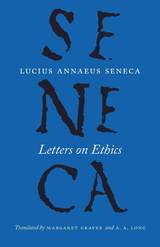 Letters on Ethics: To Lucilius
Lucius Annaeus Seneca
University of Chicago Press, 2015 The Roman statesman and philosopher Seneca (4 BCE–65 CE) recorded his moral philosophy and reflections on life as a highly original kind of correspondence. Letters on Ethics includes vivid descriptions of town and country life in Nero’s Italy, discussions of poetry and oratory, and philosophical training for Seneca’s friend Lucilius. This volume, the first complete English translation in nearly a century, makes the Letters more accessible than ever before.
Written as much for a general audience as for Lucilius, these engaging letters offer advice on how to deal with everything from nosy neighbors to sickness, pain, and death. Seneca uses the informal format of the letter to present the central ideas of Stoicism, for centuries the most influential philosophical system in the Mediterranean world. His lively and at times humorous expositions have made the Letters his most popular work and an enduring classic. Including an introduction and explanatory notes by Margaret Graver and A. A. Long, this authoritative edition will captivate a new generation of readers.
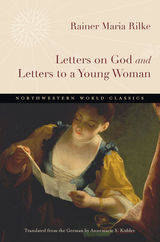 Letters on God and Letters to a Young Woman
Rainer Maria Rilke, Translated from the German by Annemarie S. Kidder
Northwestern University Press, 2012 For Rainer Maria Rilke, letter writing was a discipline and art unto itself. Some seven thousand of his letters have survived, among them works of profound beauty and insight to rival his poems and fiction. For the first time, this volume makes available to an English-speaking audience two of the earliest collections of Rilke letters published after his death, each with a nuanced introduction and notes by Annemarie S. Kidder.
The thematic collection Letters on God contains two letters by Rilke, the first an actual letter written during World War I, in 1915 in Munich, the second a fictional one composed after the war, in 1922 at Muzot in Switzerland. In these letters, Rilke builds on the mystical view of God conceived in The Book of Hours, but he moves beyond it, demonstrating a unique vision of God and Christ, the church and religious experience, friendship and death.
Like his famous Letters to a Young Poet, Rilke’s Letters to a Young Woman presents an intimate series of letters written to a young admirer. The nine letters collected here were written to Lisa Heise over the course of five years, from 1919 to 1924. Though Rilke and Heise never met, the poet emerges in these letters as a compassionate listener and patient teacher who with levelheaded sensitivity affirms and guides the movements of another person’s soul.
Letters on Natural Philosophy: The Scientific Correspondence of a Sixteenth-Century Pharmacist, with Related Texts
Camilla Erculiani
Iter Press, 2020 In her Letters on Natural Philosophy, published originally in Krakow in 1584, Camilla Erculiani proposed her new theory of the natural causes of the universal flood in the biblical book of Genesis. Erculiani weaves together her understanding of Aristotelian, Platonic, Galenic, and astrological traditions and combines them with her own observations of the world as seen from her apothecary shop in sixteenth-century Padua. This publication brought Erculiani to the attention of the Inquisition, which accused her of heresy, silencing her for centuries.
This edition presents the first full English translation of Erculiani’s book and other relevant texts, bringing to light the cultural context and scientific thought of this unique natural philosopher.
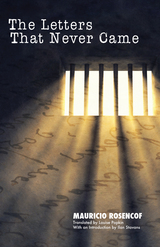 The Letters That Never Came
Mauricio Rosencof
Texas Tech University Press, 2014 An interweaving of longing and reemergence
Originally published in Spanish in 2000 and first appearing in English in 2004, The Letters that Never Came is an autobiographical novel in three parts that reflects Rosencof’s life growing up in 1930s Uruguay as the son of Polish-Jewish immigrants and, later, his twelve-year imprisonment during the military dictatorship his country suffered.
Part I is a rich evocation of life in Montevideo in the mid-1930s as seen through the eyes of young Moishe. Every day, Moishe's father waits for the postman, hoping for news of his family, who are prisoners of the Nazis. Interspersed among Moishe’s reminiscences are the letters those relatives might have written—but never came.
In Part II, Moishe is imprisoned in the dungeons of the military junta that governed Uruguay in the 1970s and 1980s. Tortured and starving, he takes refuge in the world of his imagination, composing another letter that never came—a letter to his father that embodies his own quest for identity.
Part III is largely a meditation on the redemptive power of the word, real and imagined. This poignant, humane work, as Uruguayan and Jewish as it is universal, links the cruelty of the Holocaust to that of the Uruguayan military and the resistance of Hitler's victims to his own.
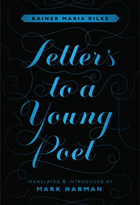 Letters to a Young Poet
Rainer Maria Rilke
Harvard University Press, 2011 In 1902, a nineteen-year-old aspiring poet named Franz Kappus wrote to Rainer Maria Rilke, then twenty-six, seeking advice on his poetry. Kappus, a student at a military academy in Vienna similar to the one Rilke had attended, was about to embark on a career as an officer, for which he had little inclination. Touched by the innocence and forthrightness of the student, Rilke responded to Kappus’ letter and began an intermittent correspondence that would last until 1908.
Letters to a Young Poet collects the ten letters that Rilke wrote to Kappus. A book often encountered in adolescence, it speaks directly to the young. Rilke offers unguarded thoughts on such diverse subjects as creativity, solitude, self-reliance, living with uncertainty, the shallowness of irony, the uselessness of criticism, career choices, sex, love, God, and art. Letters to a Young Poet is, finally, a life manual. Art, Rilke tells the young poet in his final letter to him, is only another way of living.
With the same artistry that marks his widely acclaimed translations of Kafka’s The Castle and Amerika: The Missing Person, Mark Harman captures the lyrical and spiritual dimensions of Rilke’s prose. In his introduction, he provides biographical contexts for the reader and discusses the challenges of translating Rilke. This lovely hardcover edition makes a perfect gift for any young person starting out in life or for those interested in finding a clear articulation of Rilke’s thoughts on life and art.
 Letters to Another Room
Ravil Bukharaev
Amsterdam University Press, 2013 This is a beautiful translation by John Farndon (with Olga Nakston) of the late Ravil Bukharaev’s literary existential novel memoir in which he explains to his wife how his Muslim faith and ideals influenced both his love for her and his understanding of life and self, particularly his quest for truth and ‘authenticity’. Throughout their long marriage, the writers and poets Ravil Bukharaev and Lydia Grigorieva had written in separate rooms in their home. In this deeply-felt and poetic memoir, Ravil writes to Lydia in order to try explain (at last) things left unsaid over the years. With immense honesty and insight, he explores how their journey together has been shaped by his profound Muslim beliefs and his lifelong search for what is authentic and true. Along the way, he creates finely defined and moving vignettes of eight very different people struggling to find meaning in their lives, from old Elizaveta Osipovna, alone in her Moscow flat, to proud Arzhana coping with a tough life in the Altai mountains.
 Letters to Atticus, Volume I: Letters 1–89
Cicero
Harvard University Press, 1999 The private correspondence of Rome’s most prolific public figure.
To his dear friend Atticus, Cicero reveals himself as to no other of his correspondents except perhaps his brother. In Cicero's Letters to Atticus we get an intimate look at his motivations and convictions and his reactions to what is happening in Rome. These letters also provide a vivid picture of a momentous period in Roman history, years marked by the rise of Julius Caesar and the downfall of the Republic.
When the correspondence begins in November 68 BC, the 38-year-old Cicero is a notable figure in Rome: a brilliant lawyer and orator, he has achieved primacy at the Roman bar and a political career that would culminate in the consulship in 63. Over the next twenty-four years—until November 44, a year before he was put to death by the forces of Octavian and Mark Antony—Cicero wrote frequently to his friend and confidant, sharing news and views and discussing affairs of business and state. It is to this corpus of over 400 letters that we owe most of our information about Cicero's literary activity. Here too is a revealing picture of the staunch republican's changing attitude toward Caesar. And taken as a whole the letters provide a first-hand account of social and political life in Rome.
D. R. Shackleton Bailey's authoritative edition and translation of the Letters to Atticus is a revised version of his Cambridge Classical Texts and Commentaries edition, with full explanatory notes.
 Letters to Atticus, Volume II: Letters 90–165A
Cicero
Harvard University Press, 1999 The private correspondence of Rome’s most prolific public figure.
To his dear friend Atticus, Cicero reveals himself as to no other of his correspondents except perhaps his brother. In Cicero's Letters to Atticus we get an intimate look at his motivations and convictions and his reactions to what is happening in Rome. These letters also provide a vivid picture of a momentous period in Roman history, years marked by the rise of Julius Caesar and the downfall of the Republic.
When the correspondence begins in November 68 BC, the 38-year-old Cicero is a notable figure in Rome: a brilliant lawyer and orator, he has achieved primacy at the Roman bar and a political career that would culminate in the consulship in 63. Over the next twenty-four years—until November 44, a year before he was put to death by the forces of Octavian and Mark Antony—Cicero wrote frequently to his friend and confidant, sharing news and views and discussing affairs of business and state. It is to this corpus of over 400 letters that we owe most of our information about Cicero's literary activity. Here too is a revealing picture of the staunch republican's changing attitude toward Caesar. And taken as a whole the letters provide a first-hand account of social and political life in Rome.
D. R. Shackleton Bailey's authoritative edition and translation of the Letters to Atticus is a revised version of his Cambridge Classical Texts and Commentaries edition, with full explanatory notes.
 Letters to Atticus, Volume III: Letters 166–281
Cicero
Harvard University Press, 1999 The private correspondence of Rome’s most prolific public figure.
To his dear friend Atticus, Cicero reveals himself as to no other of his correspondents except perhaps his brother. In Cicero's Letters to Atticus we get an intimate look at his motivations and convictions and his reactions to what is happening in Rome. These letters also provide a vivid picture of a momentous period in Roman history, years marked by the rise of Julius Caesar and the downfall of the Republic.
When the correspondence begins in November 68 BC, the 38-year-old Cicero is a notable figure in Rome: a brilliant lawyer and orator, he has achieved primacy at the Roman bar and a political career that would culminate in the consulship in 63. Over the next twenty-four years—until November 44, a year before he was put to death by the forces of Octavian and Mark Antony—Cicero wrote frequently to his friend and confidant, sharing news and views and discussing affairs of business and state. It is to this corpus of over 400 letters that we owe most of our information about Cicero's literary activity. Here too is a revealing picture of the staunch republican's changing attitude toward Caesar. And taken as a whole the letters provide a first-hand account of social and political life in Rome.
D. R. Shackleton Bailey's authoritative edition and translation of the Letters to Atticus is a revised version of his Cambridge Classical Texts and Commentaries edition, with full explanatory notes.
 Letters to Atticus, Volume IV: Letters 282–426
Cicero
Harvard University Press, 1999 The private correspondence of Rome’s most prolific public figure.
To his dear friend Atticus, Cicero reveals himself as to no other of his correspondents except perhaps his brother. In Cicero's Letters to Atticus we get an intimate look at his motivations and convictions and his reactions to what is happening in Rome. These letters also provide a vivid picture of a momentous period in Roman history, years marked by the rise of Julius Caesar and the downfall of the Republic.
When the correspondence begins in November 68 BC, the 38-year-old Cicero is a notable figure in Rome: a brilliant lawyer and orator, he has achieved primacy at the Roman bar and a political career that would culminate in the consulship in 63. Over the next twenty-four years—until November 44, a year before he was put to death by the forces of Octavian and Mark Antony—Cicero wrote frequently to his friend and confidant, sharing news and views and discussing affairs of business and state. It is to this corpus of over 400 letters that we owe most of our information about Cicero's literary activity. Here too is a revealing picture of the staunch republican's changing attitude toward Caesar. And taken as a whole the letters provide a first-hand account of social and political life in Rome.
D. R. Shackleton Bailey's authoritative edition and translation of the Letters to Atticus is a revised version of his Cambridge Classical Texts and Commentaries edition, with full explanatory notes.
Letters to Francesco Datini
Margherita Datini
Iter Press, 2012 The letters of Margherita Datini to her husband, “the merchant of Prato,” are virtually impossible to put down. Margherita is never obsequious, and never holds her tongue as she chastises Francesco for staying up too late, asks about a case before the Eight of Florence, beseeches him to help friends in prison, worries over financial transactions, and updates him on his business, the harvests, and his illegitimate child (whom she cares for) when he is away. Rich in emotional life and historical particulars, the letters are a unique window into late medieval Tuscany and women’s “work.” Thanks to Carolyn James and Antonio Pagliaro for their illuminating introduction and equally luminous translation.
—Jane Tylus
Professor of Italian Studies and vice provost for academic affairs, New York University
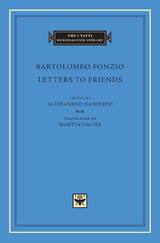 Letters to Friends
Bartolomeo Fonzio
Harvard University Press, 2011 Bartolomeo Fonzio (1447–1513) was a leading literary figure in Florence during the time of Lorenzo de’ Medici and Machiavelli. A professor of poetry and rhetoric at the University of Florence, he included among his friends and colleagues leading figures such as Marsilio Ficino, Angelo Poliziano, John Argyropoulos, Cristoforo Landino, and Pietro Soderini. He was one of the principal collaborators in creating the famous humanist library of King Mattyas Corvinus of Hungary. As a scholar and teacher, he devoted himself to the study of classical authors, particularly Valerius Flaccus, Livy, Persius and Juvenal; his studies of Juvenal led to bitter polemics with Poliziano.
Fonzio’s letters, translated here for the first time into English, are a window into the world of Renaissance humanism and classical scholarship, and include the famous letter about the discovery in 1485 on the Via Appia of the perfectly preserved body of a Roman girl.
 Letters to Friends, Volume I: Letters 1–113
Cicero
Harvard University Press, 2001 The private correspondence of Rome’s most prolific public figure.
Cicero (Marcus Tullius, 106–43 BC), Roman lawyer, orator, politician, and philosopher, of whom we know more than of any other Roman, lived through the stirring era that saw the rise, dictatorship, and death of Julius Caesar in a tottering republic. In his political speeches especially and in his correspondence we see the excitement, tension and intrigue of politics and the part he played in the turmoil of the time. Of about 106 speeches, delivered before the Roman people or the Senate if they were political, before jurors if judicial, fifty-eight survive (a few of them incompletely). In the fourteenth century Petrarch and other Italian humanists discovered manuscripts containing more than 900 letters of which more than 800 were written by Cicero and nearly 100 by others to him. These afford a revelation of the man all the more striking because most were not written for publication. Six rhetorical works survive and another in fragments. Philosophical works include seven extant major compositions and a number of others; and some lost. There is also poetry, some original, some as translations from the Greek.
The Loeb Classical Library edition of Cicero is in twenty-nine volumes.
 Letters to Friends, Volume II: Letters 114–280
Cicero
Harvard University Press, 2001 The private correspondence of Rome’s most prolific public figure.
Cicero (Marcus Tullius, 106–43 BC), Roman lawyer, orator, politician, and philosopher, of whom we know more than of any other Roman, lived through the stirring era that saw the rise, dictatorship, and death of Julius Caesar in a tottering republic. In his political speeches especially and in his correspondence we see the excitement, tension and intrigue of politics and the part he played in the turmoil of the time. Of about 106 speeches, delivered before the Roman people or the Senate if they were political, before jurors if judicial, fifty-eight survive (a few of them incompletely). In the fourteenth century Petrarch and other Italian humanists discovered manuscripts containing more than 900 letters of which more than 800 were written by Cicero and nearly 100 by others to him. These afford a revelation of the man all the more striking because most were not written for publication. Six rhetorical works survive and another in fragments. Philosophical works include seven extant major compositions and a number of others; and some lost. There is also poetry, some original, some as translations from the Greek.
The Loeb Classical Library edition of Cicero is in twenty-nine volumes.
 Letters to Friends, Volume III: Letters 281–435
Cicero
Harvard University Press, 2001 The private correspondence of Rome’s most prolific public figure.
Cicero (Marcus Tullius, 106–43 BC), Roman lawyer, orator, politician, and philosopher, of whom we know more than of any other Roman, lived through the stirring era that saw the rise, dictatorship, and death of Julius Caesar in a tottering republic. In his political speeches especially and in his correspondence we see the excitement, tension and intrigue of politics and the part he played in the turmoil of the time. Of about 106 speeches, delivered before the Roman people or the Senate if they were political, before jurors if judicial, fifty-eight survive (a few of them incompletely). In the fourteenth century Petrarch and other Italian humanists discovered manuscripts containing more than 900 letters of which more than 800 were written by Cicero and nearly 100 by others to him. These afford a revelation of the man all the more striking because most were not written for publication. Six rhetorical works survive and another in fragments. Philosophical works include seven extant major compositions and a number of others; and some lost. There is also poetry, some original, some as translations from the Greek.
The Loeb Classical Library edition of Cicero is in twenty-nine volumes.
Letters to Her Sons, 1447–1470
Alessandra Macinghi Strozzi
Iter Press, 2016 The seventy-three surviving letters written by Florentine widow, Alessandra Macinghi Strozzi (c.1406–1471), to her distant sons first appeared in print well over a century ago, but are here translated into English in their entirety for the first time. Whether for the professional historian or for the general reader interested in Renaissance Florence, they constitute a most precious testimony regarding both private and public life in the mid-fifteenth century, with themes ranging from familial relations, motherhood, marriage, and aspects of material culture to the harsh realities of political exile meted out by the Medici to their perceived opponents, these latter including her husband and, subsequently, her sons.
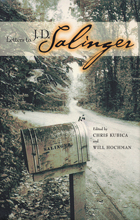 Letters to J. D. Salinger
Edited by Chris Kubica and Will Hochman
University of Wisconsin Press, 2014 He published his only novel more than fifty years ago. He has hardly been seen or heard from since 1965. Most writers fitting such a description are long forgotten, but if the novel is The Catcher in the Rye and the writer is J. D. Salinger . . . well, he’s the stuff of legends, the most famously reclusive writer of the twentieth century. If you could write to him, what would you say?
Salinger continues to maintain his silence, but Holden Caulfield, Franny and Zooey, and Seymour Glass—the unforgettable characters of his novel and short stories—continue to speak to generations of readers and writers. Letters to Salinger includes more than 150 personal letters addressed to Salinger from well-known writers, editors, critics, journalists, and other luminaries, as well as from students, teachers, and readers around the world, some of whom have just discovered Salinger for the first time. Their voices testify to the lasting impressions Salinger’s ideas and emotions have made on so many diverse lives.
Contributors include Marvin Bell, Frederick Busch, Stephen Collins, Nicholas Delbanco, Warren French, Herbert Gold, W. P. Kinsella, Molly McQuade, Stewart O’Nan, Robert O’Connor, Ellis Paul, Molly Peacock, Sanford Pinsker, George Plimpton, Gerald Rosen, Sid Salinger, David Shields, Joseph Skibell, Melanie Rae Thon, Alma Luz Villanueva, Katharine Weber, and many others
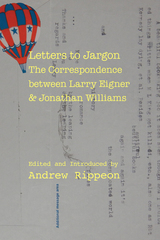 Letters to Jargon: The Correspondence between Larry Eigner and Jonathan Williams
Edited and Introduced by Andrew Rippeon
University of Alabama Press, 2019 Gathers some of the most intimate, personal writing on life and the art of poetry by a crucial figure in late twentieth-century American letters
Celebrated by both the Black Mountain poets in the 1950s and 1960s and the Language poets in the 1970s and 1980s, Larry Eigner’s poems occupy an important place in American poetry and poetics, and his reputation and legacy grow seemingly stronger with each passing year. Letters to Jargon collects all of the known correspondence between Larry Eigner and Jonathan Williams, the influential publisher of Jargon Society Press and himself a poet.
Eigner’s correspondence with Williams began in the early 1950s, as the two were in conversation over the manuscript of On My Eyes, published by Jargon in 1960. Their correspondence continued for many years thereafter, extending into the period when Eigner’s work started to gain recognition from the nascent movement that would become known as “Language” writing.
The letters are quite broad in their range of reference and provide a fuller context for Eigner’s poetry and thinking. Eigner and Williams discuss their own poetic practices, including the source material for specific poems, general writing practices, and small press and little magazine publication. This volume offers considerable insight into their shared literary communities as Eigner reports on his readings in contemporary poetry and poetics, as well as his correspondence and contact with other poets including Charles Olson, Vincent Ferrini, Robert Duncan, Denise Levertov, Robert Grenier, and Barrett Watten.
Also recorded are Eigner’s reactions to current events and explications of his own poems, including the contexts for appropriated lines and distinctions of character spacing. Eigner also shares with Williams details of his home life, his financial difficulties and the daily challenges of his cerebral palsy. Finally, the book features a series of images of the original letters, enabling readers to see Eigner’s specific material-textual practices.
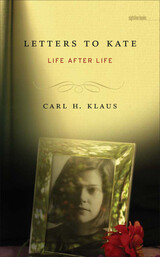 Letters to Kate: Life after Life
Carl H. Klaus
University of Iowa Press, 2006 Sorrow is “not a state but a process” that needs “not a map but a history. . . . There is something new to be chronicled every day,” writes C. S. Lewis in A Grief Observed. When Carl Klaus's wife of thirty-five years died suddenly from a cerebral hemorrhage, right before Thanksgiving in 2002, he took the only road toward recovery that made sense to him: he started writing letters to her, producing a unique history of grief, solace, and love. His vivid and thoughtful letters will resonate with everyone whose loss confronts them with emotional, psychological, and philosophical questions for which there are no easy answers.During his first year without Kate, Carl writes himself into the life that comes after the life he loved. From days of grief in the darkness of a midwestern winter, to springtime, with a return to life in the garden and a memorial service for Kate on a sunny afternoon, to fall, with a pilgrimage to their favorite vacation spot in Hawaii, Carl documents his year-long experience of remembering, meditating, and evolving a new life. Individually his letters provide the insights of a master diarist; collectively, they have the arc of a master essayist. Recording the full range of mourning from intense shock to moments of exceptional affirmation, Klaus's stories and reflections on loss bear witness to universal truths about the first and most significant year of mourning.
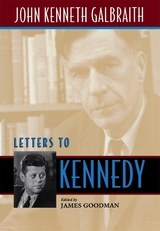 Letters to Kennedy
John Kenneth Galbraith
Harvard University Press, 1998 A unique document in the history of the Kennedy years, these letters give us a firsthand look at the working relationship between a president and one of his close advisers, John Kenneth Galbraith. In an early letter, Galbraith mentions his "ambition to be the most reticent adviser in modern political history." But as a respected intellectual and author of the celebrated The Affluent Society, he was not to be positioned so lightly, and his letters are replete with valuable advice about economics, public policy, and the federal bureaucracy. As the United States' ambassador to India from 1961 to 1963, Galbraith made use of his position to counsel the President on foreign policy, especially as it bore on the Asian subcontinent and, ultimately, Vietnam.
Written with verve and wit, his letters were relished by a president who had little patience for foolish ideas or bad prose. They stand out today as a vibrant chronicle of some of the most subtle and critical moments in the days of the Kennedy administration--and a fascinating record of the counsel that Galbraith offered President Kennedy. Ranging from a pithy commentary on Kennedy's speech accepting the 1960 Democratic presidential nomination (and inaugurating the "New Frontier") to reflections on critical matters of state such as the Cuban Missile Crisis and the threat of Communism in Indochina, Letters to Kennedypresents a rare, intimate picture of the lives and minds of a political intellectual and an intellectual politician during a particularly bright moment in American history.
 Letters to Molly: John Millington Synge to Maire O’Neill, 1906–1909
John Millington Synge
Harvard University Press, 1971 When John Millington Synge and Molly Allgood fell in love, he was thirty-five, she nineteen. Neither knew that he had Hodgkin’s disease, of which he was to die in three years. Synge had already achieved recognition as a playwright—translations of two of his plays had been performed in Berlin and Prague—and he was codirector, with Yeats and Lady Gregory, of the Irish National Theatre Society. Allgood had started her acting career the year before, in the newly opened Abbey Theatre, with a walk-on part in Synge’s Well of the Saints. She had been promoted from crowd scenes to bit parts to lead roles in Riders to the Sea and The Shadow of the Glen. She was still only a member of the company, however, while Synge was a director, whose codirectors disapproved of fraternization. Synge and Allgood also faced the disapproval of two widowed mothers. Barring an occasional holiday trip or company road tour, they could seldom be alone together, except on secret afternoon meetings for long walks in the country. Hence their hundreds of letters.
Molly Allgood’s letters do not survive; they apparently were destroyed when Synge died. But his letters convey her mercurial charm, her openness, her love of life, her impulsiveness, and her temper—as violent as his own. What they convey of him (when he is not reproving her or remonstrating with her, as he does in the early months of their relationship) is the love of nature, the poetic language, the bittersweet irony, the elemental quality of emotion, that we know from the plays. His concern for his craft is seen as he struggles with The Playboy. (“Parts of it are not structurally strong or good. I have been all this time trying to get over weak situations by strong writing, but now I find it won’t do, and I am at my wit’s end.”) Synge was quite unperturbed by the violent outrage and near-riots the play provoked. (“Now we’ll be talked about. We’re an event in the history of the Irish stage,” he wrote cheerily.)
As his illness progresses, following operations in 1907 and 1908, there is great poignancy in the gradual abating of references to marriage plans and in the shift of salutation from “Dearest Changeling” to “My dearest child.” After Synge’s death his friends and biographers discreetly avoided mention of Allgood, who under her stage name of Maire O’Neill became one of the leading actresses of the Irish theater and lived until 1952. His letters to her have not been published before, except for the few quoted in Greene and Stephens’s 1959 biography. A primary source for the study of Synge and the Irish theater movement, the letters include poems inspired by Allgood and extensive information about Abbey Theatre business.
In addition to a biographical introduction, Ann Saddlemyer has included a map of the Wicklow and Dublin areas and numerous photographs of both Synge and Allgood.
 Letters to Quintus and Brutus. Letter Fragments. Letter to Octavian. Invectives. Handbook of Electioneering
Cicero
Harvard University Press, 2002 Private correspondence and dubious disquisitions.
Cicero had an affectionate relationship with his only brother, Quintus, down to the closing years of their lives. The letters from Cicero to him in this collection offer an intimate look at their world. Cicero’s close friendship with the intensely intellectual Brutus was signalized by Cicero’s dedication of his prized Orator to Brutus. The correspondence between the two collected here dates from the spring and summer of 43 BC, and it conveys some of the drama of the period following the assassination of Julius Caesar.
Shackleton Bailey also provides in this volume a new text and translation of two invective speeches purportedly delivered in the Senate: Sallust attacking Cicero and Cicero attacking Sallust. These are probably anonymous ancient schoolbook exercises, but have come down to us with the works of Sallust and Cicero. Another work in the same category, the Letter to Octavian ostensibly by Cicero but probably dating from the third or fourth century AD, is included as well. Here too (with text by Shackleton Bailey and revised introduction and translation by M. I. Henderson) is the Handbook of Electioneering, a guide said to be written by Quintus to his brother, advising him on campaigning for the consulship of 63 BC. Whether or not this is genuinely the work of Quintus, it remains an interesting treatise on Roman elections. Letter fragments complete the volume; these were not previously available in the Loeb Classical Library.
Letters to the New Island
William Butler Yeats
Harvard University Press Written for the most part from London, where Yeats was then living, for the Boston Pilot and the Providence Sunday Journal in the years between 1888 and 1892, these articles charmingly revive the English and Irish literary life of the late eighties. In them the young poet writes of his contemporaries, old and young; and what he has to say of them has the pungency of immediate, living comment. But in them there is more than this: in them are formulated and expressed the ideas that have moulded not only much of Yeats’s later work but also much of the work of the Irish Renaissance in general. They allow us to see into the mind of the young Yeats when, full of race and vision, he was beginning his own work and at the same time was dreaming of how he might rebuild the literature of a nation.
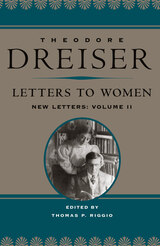 Letters to Women: New Letters, volume 2
Theodore Dreiser. Edited by Thomas P. Riggio
University of Illinois Press, 2008 Theodore Dreiser led a long and controversial life, almost always pursuing some serious question, and not rarely pursuing women. This collection, the second volume of Dreiser correspondence to be published by the University of Illinois Press, gathers previously unpublished letters Dreiser wrote to women between 1893 and 1945, many of them showing personal feelings Dreiser revealed nowhere else. Here he both preens and mocks himself, natters and scolds, relates his jaunts with Mencken and his skirmishes with editors and publishers. He admits his worries, bemoans his longings, and self-consciously embarks on love letters that are unafraid to smolder and flame. To one reader he sends “Kisses, Kisses, Kisses, for your sweety mouth” and urges his needy requests: “Write me a love-letter Honey girl.” Alongside such amorous play, he often expressed his deepest feelings on philosophical, religious, and social issues that characterize his public writing. Chronologically arranged and meticulously edited by Thomas P. Riggio, these letters reveal how wide and deep Dreiser’s needs were. Dreiser often discussed his writing in his letters to women friends, telling them what he wanted to do, where he thought he succeeded and failed, and seeking approval or criticism. By turns seductive, candid, coy, and informative, these letters provide an intimate view of a master writer who knew exactly what he was after.
Letters, Volume 1
Barsanuphius and John
Catholic University of America Press, 2006 No description available
Letters, Volume 2
Barsanuphius and John
Catholic University of America Press, 2006 No description available
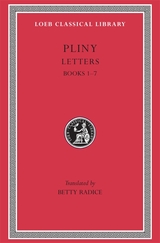 Letters, Volume I: Books 1–7
Pliny the Younger
Harvard University Press Correspondence from a distinguished and eventful life.
The Younger Pliny was born in AD 61 or 62, the son of Lucius Caecilius of Comum (Como) and the Elder Pliny’s sister. He was educated at home and then in Rome under Quintilian. He was at Misenum at the time of the eruption of Vesuvius in 79 (described in two famous letters) when the Elder Pliny died.
Pliny started his career at the Roman bar at the age of eighteen. He moved through the regular offices in a senator’s career, held two treasury appointments and a priesthood, and was consul in September and October 100. On this occasion he delivered the speech of thanks to the emperor Trajan which he afterwards expanded and published as the Panegyricus. After his consulship he returned to advocacy in the court and Senate, and was also president of the Tiber Conservancy Board. His hopes of retirement were cut short when he was chosen by Trajan to go out to the province of Bithynia and Pontus on a special commission as the emperor’s direct representative. He is known to have been there two years, and is presumed to have died there before the end of 113. Book 10 of the Letters contains his correspondence with Trajan during this period, and includes letters about the early Christians.
Pliny's Letters are important as a social document of his times. They tell us about the man himself and his wide interests, and about his many friends, including Tacitus, Martial, and Suetonius. Pliny has a gift for description and a versatile prose style, and more than any of his contemporaries he gives an unprejudiced picture of Rome as he knew it.
The Loeb Classical Library edition of Pliny the Younger is in two volumes; the second contains Books 8–10 of his Letters and Panegyricus.
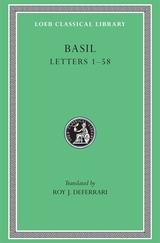 Letters, Volume I: Letters 1–58
Basil
Harvard University Press Correspondence of a Cappadocian Father.
Basil the Great was born ca. AD 330 at Caesarea in Cappadocia into a family noted for piety. He was at Constantinople and Athens for several years as a student with Gregory of Nazianzus and was much influenced by Origen. For a short time he held a chair of rhetoric at Caesarea, and was then baptized. He visited monasteries in Egypt and Palestine and sought out the most famous hermits in Syria and elsewhere to learn how to lead a pious and ascetic life; but he decided that communal monastic life and work were best. About 360 he founded in Pontus a convent to which his sister and widowed mother belonged. Ordained a presbyter in 365, in 370 he succeeded Eusebius in the archbishopric of Caesarea, which included authority over all Pontus. He died in 379. Even today his reform of monastic life in the east is the basis of modern Greek and Slavonic monasteries.
The Loeb Classical Library edition of Basil’s Letters is in four volumes.
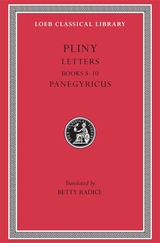 Letters, Volume II: Books 8–10. Panegyricus
Pliny the Younger
Harvard University Press Correspondence from a distinguished and eventful life.
The Younger Pliny was born in AD 61 or 62, the son of Lucius Caecilius of Comum (Como) and the Elder Pliny’s sister. He was educated at home and then in Rome under Quintilian. He was at Misenum at the time of the eruption of Vesuvius in 79 (described in two famous letters) when the Elder Pliny died.
Pliny started his career at the Roman bar at the age of eighteen. He moved through the regular offices in a senator’s career, held two treasury appointments and a priesthood, and was consul in September and October 100. On this occasion he delivered the speech of thanks to the emperor Trajan which he afterwards expanded and published as the Panegyricus. After his consulship he returned to advocacy in the court and Senate, and was also president of the Tiber Conservancy Board. His hopes of retirement were cut short when he was chosen by Trajan to go out to the province of Bithynia and Pontus on a special commission as the emperor’s direct representative. He is known to have been there two years, and is presumed to have died there before the end of 113. Book 10 of the Letters contains his correspondence with Trajan during this period, and includes letters about the early Christians.
Pliny's Letters are important as a social document of his times. They tell us about the man himself and his wide interests, and about his many friends, including Tacitus, Martial, and Suetonius. Pliny has a gift for description and a versatile prose style, and more than any of his contemporaries he gives an unprejudiced picture of Rome as he knew it.
The Loeb Classical Library edition of Pliny the Younger is in two volumes; the first contains Books 1–7 of his Letters and an Introduction.
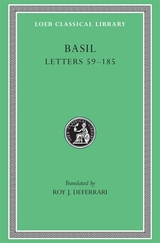 Letters, Volume II: Letters 59–185
Basil
Harvard University Press Correspondence of a Cappadocian Father.
Basil the Great was born ca. AD 330 at Caesarea in Cappadocia into a family noted for piety. He was at Constantinople and Athens for several years as a student with Gregory of Nazianzus and was much influenced by Origen. For a short time he held a chair of rhetoric at Caesarea, and was then baptized. He visited monasteries in Egypt and Palestine and sought out the most famous hermits in Syria and elsewhere to learn how to lead a pious and ascetic life; but he decided that communal monastic life and work were best. About 360 he founded in Pontus a convent to which his sister and widowed mother belonged. Ordained a presbyter in 365, in 370 he succeeded Eusebius in the archbishopric of Caesarea, which included authority over all Pontus. He died in 379. Even today his reform of monastic life in the east is the basis of modern Greek and Slavonic monasteries.
The Loeb Classical Library edition of Basil’s Letters is in four volumes.
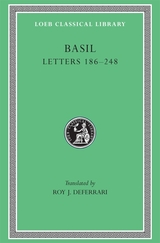 Letters, Volume III: Letters 186–248
Basil
Harvard University Press Correspondence of a Cappadocian Father.
Basil the Great was born ca. AD 330 at Caesarea in Cappadocia into a family noted for piety. He was at Constantinople and Athens for several years as a student with Gregory of Nazianzus and was much influenced by Origen. For a short time he held a chair of rhetoric at Caesarea, and was then baptized. He visited monasteries in Egypt and Palestine and sought out the most famous hermits in Syria and elsewhere to learn how to lead a pious and ascetic life; but he decided that communal monastic life and work were best. About 360 he founded in Pontus a convent to which his sister and widowed mother belonged. Ordained a presbyter in 365, in 370 he succeeded Eusebius in the archbishopric of Caesarea, which included authority over all Pontus. He died in 379. Even today his reform of monastic life in the east is the basis of modern Greek and Slavonic monasteries.
The Loeb Classical Library edition of Basil’s Letters is in four volumes.
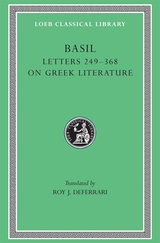 Letters, Volume IV: Letters 249–368. On Greek Literature
Basil
Harvard University Press Correspondence of a Cappadocian Father.
Basil the Great was born ca. AD 330 at Caesarea in Cappadocia into a family noted for piety. He was at Constantinople and Athens for several years as a student with Gregory of Nazianzus and was much influenced by Origen. For a short time he held a chair of rhetoric at Caesarea, and was then baptized. He visited monasteries in Egypt and Palestine and sought out the most famous hermits in Syria and elsewhere to learn how to lead a pious and ascetic life; but he decided that communal monastic life and work were best. About 360 he founded in Pontus a convent to which his sister and widowed mother belonged. Ordained a presbyter in 365, in 370 he succeeded Eusebius in the archbishopric of Caesarea, which included authority over all Pontus. He died in 379. Even today his reform of monastic life in the east is the basis of modern Greek and Slavonic monasteries.
The Loeb Classical Library edition of Basil’s Letters is in four volumes.
 Letting Go: Feminist and Social Justice Insight and Activism
Donna King
Vanderbilt University Press, 2015 At a time when women are being exhorted to "lean in" and work harder to get ahead, Letting Go: Feminist and Social Justice Insight and Activism encourages both women and men to "let go" instead. The book explores alternatives to the belief that individual achievement, accumulation, and attention-seeking are the road to happiness and satisfaction in life. Letting go demands a radical recognition that the values, relationships, and structures of our neoliberal (competitive, striving, accumulating, consuming, exploiting, oppressive) society are harmful both on a personal level and, especially important, on a social and environmental level.
There is a huge difference between letting go and "chilling out." In a lean-in society, self-care is promoted as something women and men should do to learn how to "relax" and find a comfortable work-life balance. By contrast, a feminist letting-go and its attendant self-care have the potential to be a radical act of awakening to social and environmental injustice and a call to activism.
 Letting Play Bloom: Designing Nature-Based Risky Play for Children
Lolly Tai
Temple University Press, 2022 Children love to play in risky—often misunderstood to mean unsafe—ways. It is often how they learn. Research shows that activities like climbing on trees and boulders, hiking in nature, and playing in a creek are excellent ways for kids to develop their creativity and their senses, because playing outdoors evokes different sights, sounds, smells, and textures. Letting Play Bloom analyzes five outstanding case studies of children’s nature-based risky play spaces—the Slide Hill at Governors Island in New York, the Berkeley (CA) Adventure Playground, and Wildwoods at Fernbank Museum in Atlanta, as well as sites in the Netherlands and Australia. Author Lolly Tai provides detailed explanations of their background and design, and what visitors can experience at each site. She also outlines the six categories of risky—not hazardous—play, which involve great heights, rapid speeds, dangerous tools, dangerous elements, rough-and-tumble play, and wandering or getting lost. These activities allow children to explore and challenge themselves (testing their limits) to foster greater self-worth while also learning valuable risk-management skills such as dealing with fear-inducing situations. Filled with more than 200 photographs, Letting Play Bloom advocates for a thoughtful landscape design process that incorporates the specific considerations children need to fully experience the thrill that comes from playing in nature.
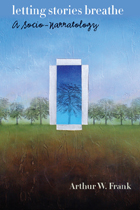 Letting Stories Breathe: A Socio-Narratology
Arthur W. Frank
University of Chicago Press, 2010 Stories accompany us through life from birth to death. But they do not merely entertain, inform, or distress us—they show us what counts as right or wrong and teach us who we are and who we can imagine being. Stories connect people, but they can also disconnect, creating boundaries between people and justifying violence. In Letting Stories Breathe, Arthur W. Frank grapples with this fundamental aspect of our lives, offering both a theory of how stories shape us and a useful method for analyzing them. Along the way he also tells stories: from folktales to research interviews to remembrances.
Frank’s unique approach uses literary concepts to ask social scientific questions: how do stories make life good and when do they endanger it? Going beyond theory, he presents a thorough introduction to dialogical narrative analysis, analyzing modes of interpretation, providing specific questions to start analysis, and describing different forms analysis can take. Building on his renowned work exploring the relationship between narrative and illness, Letting Stories Breathe expands Frank’s horizons further, offering a compelling perspective on how stories affect human lives.
Leucippe and Clitophon
Achilles Tatius
Harvard University Press A charming Greek romance narrated by its hero.
Achilles Tatius was a Greek from Alexandria in Egypt; he is now believed to have flourished in the second century AD. Of his life nothing is known, though the Suidas says he became a Christian and a bishop and wrote a work on etymology, one on the sphere, and an account of great men. He is famous however for his surviving novel in eight books, The Adventures of Leucippe and Clitophon, one of the best Greek love stories. Clitophon relates to a friend the various difficulties which he and Leucippe had to overcome before they are happily united. The story is full of incident and readers are kept in suspense. There are many digressions giving scientific facts, myths, meditations, and so on, the interest of which redeems irrelevance.
Levee
Paul Otremba
Four Way Books, 2019 The poems in Paul Otremba’s Levee explore the intersection between the ecological, the political, and the personal in a world built on oil and greed. The city of Houston is at once backdrop and metaphor for the ways in which violence—both natural and manmade—have become part and parcel of twenty-first century life. “It’s a luxury to be this calm,” Otremba writes in the opening poem, a held-breath between the disastrous effects of hurricanes and cancer. Yet Otremba’s exquisite lines manage to wrest meaning from the devastation wrought by both global warming and a terminal illness: “If there is a lesson / on how not to worry, it’s that you’re not stuck only being one thing, /the multitudes in me and the multitudes in you.”
Level 7
Mordecai Roshwald; Edited and with a new foreword by David Seed
University of Wisconsin Press, 2004 Level 7 is the diary of Officer X-127, who is assigned to stand guard at the "Push Buttons," a machine devised to activate the atomic destruction of the enemy, in the country’s deepest bomb shelter. Four thousand feet underground, Level 7 has been built to withstand the most devastating attack and to be self-sufficient for five hundred years. Selected according to a psychological profile that assures their willingness to destroy all life on Earth, those who are sent down may never return.
Originally published in 1959, and with over 400,000 copies sold, this powerful dystopian novel remains a horrific vision of where the nuclear arms race may lead, and is an affirmation of human life and love. Level 7 merits comparison to Huxley’s A Brave New World and Orwell’s 1984 and should be considered a must-read by all science fiction fans.
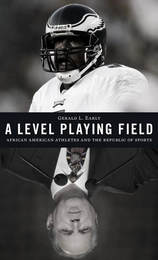 A Level Playing Field: African American Athletes and the Republic of Sports
Gerald L. Early
Harvard University Press, 2011 As Americans, we believe there ought to be a level playing field for everyone. Even if we don’t expect to finish first, we do expect a fair start. Only in sports have African Americans actually found that elusive level ground. But at the same time, black players offer an ironic perspective on the athlete-hero, for they represent a group historically held to be without social honor.
In his first new collection of sports essays since Tuxedo Junction (1989), the noted cultural critic Gerald Early investigates these contradictions as they play out in the sports world and in our deeper attitudes toward the athletes we glorify. Early addresses a half-century of heated cultural issues ranging from integration to the use of performance-enhancing drugs. Writing about Jackie Robinson and Curt Flood, he reconstructs pivotal moments in their lives and explains how the culture, politics, and economics of sport turned with them. Taking on the subtexts, racial and otherwise, of the controversy over remarks Rush Limbaugh made about quarterback Donovan McNabb, Early restores the political consequence to an event most commentators at the time approached with predictable bluster.
The essays in this book circle around two perennial questions: What other, invisible contests unfold when we watch a sporting event? What desires and anxieties are encoded in our worship of (or disdain for) high-performance athletes?
These essays are based on the Alain Locke lectures at Harvard University’s Du Bois Institute.
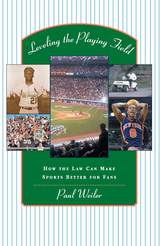 Leveling the Playing Field: How the Law Can Make Sports Better for Fans
Paul C. Weiler
Harvard University Press, 2000 The world of sports seems entwined with lawsuits. This is so, Paul Weiler explains, because of two characteristics intrinsic to all competitive sports. First, sporting contests lose their drama if the competition becomes too lopsided. Second, the winning athletes and teams usually take the "lion's share" of both fan attention and spending. So interest in second-rate teams and in second-rate leagues rapidly wanes, leaving one dominant league with monopoly power.
The ideal of evenly balanced sporting contests is continually challenged by economic, social, and technological forces. Consequently, Weiler argues, the law is essential to level the playing field for players, owners, and ultimately fans and taxpayers. For example, he shows why players' use of performance-enhancing drugs, even legal ones, should be treated as a more serious offense than, say, use of cocaine. He also explains why proposals to break up dominant leagues and create new ones will not work, and thus why both union representation of players and legal protection for fans--and taxpayers--are necessary.
Using well-known incidents--and supplying little-known facts--Weiler analyzes a wide array of moral and economic issues that arise in all competitive sports. He tells us, for example, how Commissioner Bud Selig should respond to Pete Rose's quest for admission to the Hall of Fame; what kind of settlement will allow baseball players and owners to avoid a replay of their past labor battles; and how our political leaders should address the recent wave of taxpayer-built stadiums.
The Leverage of Labor: Managing the Cortés Haciendas in Tehuantepec, 1588–1688
Lolita Gutiérrez Brockington
Duke University Press, 1989 This work is an ethnohistorical investigation of the social and economic structure of the vast estates granted to the Cortés family in southern Mexico. Lolita Gutiérrez Brockington deals with landholding patterns, agricultural production, and the social organization and use of native Indian and African slave labor on these estates, thereby shedding a great deal of light on this little-known early colonial period.
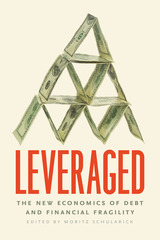 Leveraged: The New Economics of Debt and Financial Fragility
Edited by Moritz Schularick
University of Chicago Press, 2022 An authoritative guide to the new economics of our crisis-filled century. Published in collaboration with the Institute for New Economic Thinking.
The 2008 financial crisis was a seismic event that laid bare how financial institutions’ instabilities can have devastating effects on societies and economies. COVID-19 brought similar financial devastation at the beginning of 2020 and once more massive interventions by central banks were needed to heed off the collapse of the financial system. All of which begs the question: why is our financial system so fragile and vulnerable that it needs government support so often?
For a generation of economists who have risen to prominence since 2008, these events have defined not only how they view financial instability, but financial markets more broadly. Leveraged brings together these voices to take stock of what we have learned about the costs and causes of financial fragility and to offer a new canonical framework for understanding it. Their message: the origins of financial instability in modern economies run deeper than the technical debates around banking regulation, countercyclical capital buffers, or living wills for financial institutions. Leveraged offers a fundamentally new picture of how financial institutions and societies coexist, for better or worse.
The essays here mark a new starting point for research in financial economics. As we muddle through the effects of a second financial crisis in this young century, Leveraged provides a road map and a research agenda for the future.
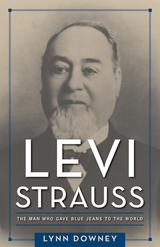 Levi Strauss: The Man Who Gave Blue Jeans to the World
Lynn Downey
University of Massachusetts Press, 2016 Winner of the 2016 Foreword Indies' Silver Award in Biography
Blue jeans are globally beloved and quintessentially American. They symbolize everything from the Old West to the hippie counter-culture; everyone from car mechanics to high-fashion models wears jeans. And no name is more associated with blue jeans than Levi Strauss & Co., the creator of this classic American garment.
As a young man Levi Strauss left his home in Germany and immigrated to America. He made his way to San Francisco and by 1853 had started his company. Soon he was a leading businessman in a growing commercial city that was beginning to influence the rest of the nation. Family-centered and deeply rooted in his Jewish faith, Strauss was the hub of a wheel whose spokes reached into nearly every aspect of American culture: business, philanthropy, politics, immigration, transportation, education, and fashion.
But despite creating an American icon, Levi Strauss is a mystery. Little is known about the man, and the widely circulated "facts" about his life are steeped in mythology. In this first full-length biography, Lynn Downey sets the record straight about this brilliant businessman. Strauss's life was the classic American success story, filled with lessons about craft and integrity, leadership and innovation.
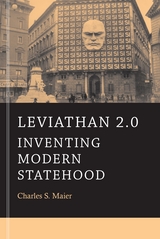 Leviathan 2.0: Inventing Modern Statehood
Charles S. Maier
Harvard University Press, 2014 Thomas Hobbes laid the theoretical groundwork of the nation-state in Leviathan, his tough-minded treatise of 1651. Leviathan 2.0 updates this classic account to explain how modern statehood took shape between the mid-nineteenth and mid-twentieth centuries, before it unraveled into the political uncertainty that persists today.
Modern states were far from immune to the modernizing forces of war, technology, and ideology. From 1845 to 1880, the United States, Canada, Mexico, and Argentina were all reconstituted through territorial violence. Europe witnessed the unification of Germany and Italy, while Asian nations such as Japan tried to mitigate foreign incursions through state-building reforms. A global wave of revolution at the turn of the century pushed the modernization process further in China, Russia, Iran, and Ottoman Turkey. By the late 1930s, with the rise of the Soviet Union and Nazi Germany, the momentum of history seemed to shift toward war-glorifying totalitarian states. But several variants of the modern state survived World War II: the welfare states of Western democracies; single-party socialist governments; and governments dominated by the military, especially prevalent in Latin America, Asia, and the Middle East.
Toward the end of the twentieth century, all of these forms stood in growing tension with the transformative influences of globalized capitalism. Modern statehood recreated itself in many ways, Charles S. Maier concludes, but finally had to adopt a precarious equilibrium with ever more powerful economic forces.
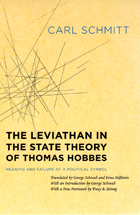 The Leviathan in the State Theory of Thomas Hobbes: Meaning and Failure of a Political Symbol
Carl Schmitt
University of Chicago Press, 2008 One of the most significant political philosophers of the twentieth century, Carl Schmitt is a deeply controversial figure who has been labeled both Nazi sympathizer and modern-day Thomas Hobbes. First published in 1938, The Leviathan in the State Theory of Thomas Hobbes used the Enlightenment philosopher’s enduring symbol of the protective Leviathan to address the nature of modern statehood. A work that predicted the demise of the Third Reich and that still holds relevance in today’s security-obsessed society, this volume will be essential reading for students and scholars of political science.
“Carl Schmitt is surely the most controversial German political and legal philosopher of this century. . . . We deal with Schmitt, against all odds, because history stubbornly persists in proving many of his tenets right.”—Perspectives on Political Science
“[A] significant contribution. . . . The relation between Hobbes and Schmitt is one of the most important questions surrounding Schmitt: it includes a distinct, though occasionally vacillating, personal identification as well as an association of ideas.”—Telos
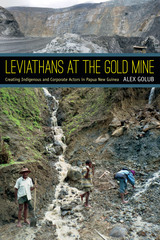 Leviathans at the Gold Mine: Creating Indigenous and Corporate Actors in Papua New Guinea
Alex Golub
Duke University Press, 2014 Leviathans at the Gold Mine is an ethnographic account of the relationship between the Ipili, an indigenous group in Papua New Guinea, and the large international gold mine operating on their land. It was not until 1939 that Australian territorial patrols reached the Ipili. By 1990, the third largest gold mine on the planet was operating in their valley. Alex Golub examines how "the mine" and "the Ipili" were brought into being in relation to one another, and how certain individuals were authorized to speak for the mine and others to speak for the Ipili. Considering the relative success of the Ipili in their negotiations with a multinational corporation, Golub argues that a unique conjuncture of personal relationships and political circumstances created a propitious moment during which the dynamic and fluid nature of Ipili culture could be used to full advantage. As that moment faded away, social problems in the valley increased. The Ipili now struggle with the extreme social dislocation brought about by the massive influx of migrants and money into their valley.
 Levinas: An Introduction
Colin Davis, Jr.
University of Notre Dame Press, 1997 In recent years, there has been a resurgence of interest in the work of Emmanuel Levinas, widely recognized as one of the most important yet difficult philosophers of the twentieth century. In this much-needed introduction, Colin Davis unpacks the concepts at the center of Levinas's thought-alterity, the Other, the face, infinity-concepts which have previously presented readers with major problems of interpretation. Davis traces the development of Levinas's thought over six decades, describing the context in which he worked, and the impact of his writings. He argues that Levinas' work remains tied to the ontological tradition with which he wants to break, and demonstrates how his later writing tries to overcome this dependency by its increasingly disruptive, sometimes opaque, textual practice. He discusses Levinas’s theological writings and his relationship to Judaism, as well as the reception of his work by contemporary thinkers, arguing that the influence of his work has led to a growing interest in ethical issues among poststructuralist and postmodernist thinkers in recent years.
 Levinas on the Primacy of the Ethical: Philosophy as Prophecy
Jeffrey Bloechl
Northwestern University Press, 2023 Exploring the relationship between phenomenology and religion in Levinas’s writings
The philosophy of Emmanuel Levinas affirms both the urgency of peace and the fact that peace is never finally assured. This tension is a question of responsibility and of the ethical relation in which that responsibility is grounded. Jeffrey Bloechl pursues this prophetic dimension of Levinas’s philosophy—his commitment to phenomenology and to a philosophy of religion—to make the case for the mutual reinforcement and intelligibility of these two threads.
Levinas on the Primacy of the Ethical traces the emergence of Levinas’s early thought in relation to modern political philosophy, his revision of Martin Heidegger’s existential phenomenology, the consolidation of his mature position, his important differences with Freudian psychoanalysis, the turn from metaphysics to language in his later philosophy, and his complex relationship with Christian theology. Starting with an exposition of how positive notions of religious transcendence are already present in some of Levinas’s early phenomenological texts, Bloechl then stakes the reverse claim: that Levinas’s conception of God is dependent on his existential phenomenology. Proceeding chronologically, but with frequent nods to later developments, this book builds toward the ultimate assertion that Levinas offers us a phenomenology of event and of relation without appeal to any foundation, ground, or causal principle. Only in this way is Levinas able to generate an argument—and not merely an exhortation—for the primacy of the ethical as he conceives it.
Levinas's Existential Analytic: A Commentary on Totality and Infinity
James R. Mensch
Northwestern University Press, 2015 By virtue of the originality and depth of its thought, Emmanuel Levinas’s masterpiece, Totality and Infinity: An Essay on Exteriority, is destined to endure as one of the great works of philosophy. It is an essential text for understanding Levinas’s discussion of “the Other,” yet it is known as a “difficult” book. Modeled after Norman Kemp Smith’s commentary on Kant’s Critique of Pure Reason, Levinas’s Existential Analytic guides both new and experienced readers through Levinas’s text. James R. Mensch explicates Levinas’s arguments and shows their historical referents, particularly with regard to Heidegger, Husserl, and Derrida. Students using this book alongside Totality and Infinity will be able to follow its arguments and grasp the subtle phenomenological analyses that fill it.
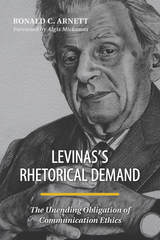 Levinas's Rhetorical Demand: The Unending Obligation of Communication Ethics
Ronald C. Arnett. Foreword by Algis Mickunas
Southern Illinois University Press, 2017 Distinguished Book Award, Philosophy of Communication Division, National Communication Association, 2017 Top Book Award, Communication Ethics Division, National Communication Association, 2017 Philosopher Emmanuel Levinas’s ethics as first philosophy explicates a human obligation and responsibility to and for the Other that is an unending and imperfect commitment. In Levinas’s Rhetorical Demand: The Unending Obligation of Communication Ethics, Ronald C. Arnett underscores the profundity of Levinas’s insights for communication ethics. Arnett outlines communication ethics as a primordial call of responsibility central to Levinas’s writing and mission, analyzing it through a Levinasian lens with examination of social artifacts ranging from the Heidegger-Cassirer debate to Rupert Murdoch’s News of the World story concerning illicit possession of information. Levinas’s Rhetorical Demand offers an account of Levinas’s project and the pragmatic implications of attending to a call of responsibility to and for the Other. This book yields a rich and nuanced understanding of Levinas’s work, revealing the practical importance of his insights, and including a discussion of related theorists and thinkers.
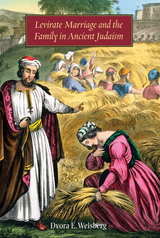 Levirate Marriage and the Family in Ancient Judaism
Dvora E. Weisberg
Brandeis University Press, 2009 In this study, Weisberg uses levirate marriage (an institution that involves the union of a man and the widow of his childless brother) as described in biblical law and explicated in rabbinic Judaism as a lens to examine the status of women and attitudes toward marriage, sexuality, and reproduction in early Jewish society. While marriage generally marks the beginning of a new family unit, levirate comes into play when a family’s life is cut short. As such, it offers an opportunity to study the family at a moment of breakdown and restructuring. With her discussion rooted in rabbinic sources and commentary, Weisberg explores kinship structure and descent, the relationship between a family unit created through levirate marriage and the extended family, and the roles of individuals within the family. She also considers the position of women, asking whether it is through marriage or the bearing of children that a woman becomes part of her husband’s family, and to what degree a married woman remains part of her natal family. She argues that rabbinic responses to levirate suggest that a family is an evolving entity, one that can preserve itself through realignment and redefinition.
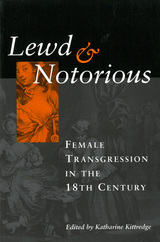 Lewd and Notorious: Female Transgression in the Eighteenth Century
Katharine Kittredge, Editor
University of Michigan Press, 2003 Accounts of women's transgressive behavior in eighteenth-century literature and social documents have much to teach us about constructions of femininity during the period often identified as having formed our society's gender norms. Lewd and Notorious explores the eighteenth century's shadows, inhabited by marginal women of many kinds and degrees of contrariness. The reader meets Laetitia Pilkington, whose sexual indiscretions caused her to fall from social and literary grace to become an articulate memoirist of personal scandal, and Elizabeth Brownrigg, who tortured and starved her young servants, propelling herself to an infamy comparable to Susan Smith's or Myra Hindley's. More awful women wait between these covers to teach us about society's reception (and construction) of their debauchery and dangerousness.
The authors draw upon a rich range of contemporary texts to illuminate the lives of these women. Astute analysis of literary, legal, evangelical, epistolary, and political documents provides an understanding of 1700s womanhood. From lusty old maids to murderous mistresses, the characters who exemplify this period's vision of women on the edge are essential acquaintances for anyone wishing to understand the development and ramifications of conceptions of femininity.
Katharine Kittredge is Associate Professor of English, Ithaca College.
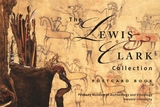 The Lewis & Clark Collection Postcard Book
Castle McLaughlin
Harvard University Press The Peabody Museum's Lewis and Clark collection is a set of magnificent eighteenth- and early-nineteenth-century objects long thought to be the only surviving ethnographic items acquired by Lewis and Clark and their Corps of Discovery during their epic exploration of the American West. The pieces include spectacular buffalo robes and ceremonial pipes, painted, quilled, and beaded dresses and baby carriers, and woven basketry hats from tribes ranging from the Upper Missouri River area to the Northwest Coast. This postcard book contains a selection of eleven of the finest pieces in the collection, beautifully photographed by renowned museum photographer Hillel S. Burger. The removable cards are interleafed with informative discussions of the objects, their collection histories, and significance, by anthropologist Castle McLaughlin. This exquisite little book commemorates the ongoing bicentennial of the Lewis and Clark Expedition.
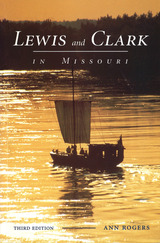 Lewis and Clark in Missouri
Ann Rogers
University of Missouri Press, 2002 In May 1804 Meriwether Lewis, William Clark, and the Corps of Discovery embarked on a seven-thousand-mile journey with instructions from President Thomas Jefferson to ascend the Missouri River to its source and continue on to the Pacific. They had spent five months in the St. Louis area preparing for the expedition that began with a six-hundred-mile, ten-week crossing of the future state of Missouri. Prior to this, the explorers had already seen about two hundred miles of Missouri landscape as they traveled up the Mississippi River to St. Louis in the autumn of 1803. Lewis and Clark in Missouri focuses on the Missouri chapter of their epic journey, a portion of the story that has been slighted in other accounts. Ann Rogers uses the journals kept by members of the Corps along with many other primary source materials, providing a firsthand perspective on the people, plants, wildlife, rivers, and landscapes the explorers encountered. Beautiful color photographs and illustrations complement the text and support the passages Rogers quotes from the journals. Brief biographies of Lewis, Clark, Sacagawea, John Colter, York, and other members of the expedition tell of their years in Missouri after the journey ended. Today’s followers of the Lewis and Clark Trail can find descriptions of sites to visit in Missouri, Kansas, and Illinois. Carefully researched, yet highly readable, Lewis and Clark in Missouri will be of great interest not only to Missourians, but also to anyone wishing to learn more about the Corps of Discovery’s historic journey.
Lewis H. Morgan on Iroquois Material Culture
Elisabeth Tooker
University of Arizona Press, 1994 Lewis Henry Morgan's mid-nineteenth-century assemblage of Iroquois-made artifacts featured more than 500 objects and at the time was the largest such collection for a single Indian group. In this richly illustrated volume, Elisabeth Tooker has brought together much previously unpublished material not only to show how Morgan managed such an impressive feat of scholarship but also to reveal something of his too often neglected research methods.
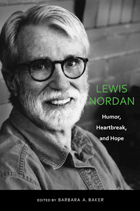 Lewis Nordan: Humor, Heartbreak, and Hope
Edited by Barbara A. Baker
University of Alabama Press, 2012 A vibrant tribute to Lewis Nordan’s unforgettable blend of Southern surrealism, dark humor, and deep humanity. Lewis Nordan: Humor, Heartbreak, and Hope is a rich collection of essays that examines the life and work of one of the South’s most distinctive literary voices. Edited by Barbara A. Baker, this volume brings together scholars and writers who explore Nordan’s use of magical realism, dark humor, and emotional vulnerability to portray the complexities of life in the Mississippi Delta. Through themes of race, poverty, family, and resilience, the contributors illuminate how Nordan’s fiction captures both the pain and beauty of the Southern experience. This book is essential reading for fans of Southern literature, cultural studies, and American fiction. Written by scholars and fiction writers who represent a fascinating range of experience—from a Shakespearean scholar to English professors to a former student of Nordan’s—this is a rich array of essays, poems, and visual arts in tribute to this increasingly important writer. The collection deepens the base of scholarship on Nordan, and contextualizes his work in relation to other important southern writers such as William Faulkner and Eudora Welty. Nordan was born and raised in Mississippi before moving to Alabama to pursue his Ph.D. at Auburn University. He taught for several years at the University of Arkansas in Fayetteville and retired from the University of Pittsburgh, where he was a professor of English. Nordan has written four novels, three collections of short stories, and a memoir entitled Boy with Loaded Gun. His second novel, Wolf Whistle, won the Southern Book Award, and his subsequent novel, The Sharpshooter Blues, won the Notable Book Award from the American Library Association and the Fiction Award from the Mississippi Institute of Arts and Letters. Nordan is renowned for his distinctive comic writing style, even while addressing more serious personal and cultural issues such as heartbreak, loss, violence, and racism. He transforms tragic characters and events into moments of artistic transcendence, illuminating what he calls the “history of all human beings.”
Lex Aquilia (Digest IX, 2, Ad Legem Aquiliam). On Gifts between Husband and Wife (Digest XXIV, 1, De Donationibus inter Virum et Uxorem)
James B. Thayer
Harvard University Press This book deals with two titles of Justinian’s Digest or Pandects, containing a translation and commentary on the first, Ad Legem Aquiliam, which treats of damage to property, and a mere commentary on the second, touching the prohibition of gifts between husband and wife. The first title is expounded from the point of view of American students with parallel reference to cases in the Anglo-American law. The discussion of the other is from a more technical and strictly Roman standpoint. The chief aim in arriving at the real content of the texts was to support their genuineness from the attacks so freely made by the modern school of “interpolationists.”
Lexical and Semantic Aspects of Proverbs
František Cermák
Karolinum Press, 2019 This book is linguistic in nature, offering a number of aspects of contemporary languages and their proverbs. Focusing mostly on lexical, semantic and pragmatic aspects, the book also explores language corpora findings. Apart from collecting data on proverbs from dozens of languages, there is an effort to map proverbs within a language in a systematic and reliable way. The book will prove useful to paremiologists, lexicographers, and comparative linguists.
A Lexical Approach to Italian Cliticization
Paola Monachesi
CSLI, 1999 This volume examines the behavior of clitics both in Italian and in certain southern Italian dialects in order to show that, even within a single language, clitics exhibit different properties. Monachesi argues against the existence of a special class 'clitics' whose elements exhibit variable behavior. Instead, she decomposes and assimilates their properties to those of well established categories. Motivations are thus provided for treating Italian object clitics as affixes. It is shown that both their morphosyntactic and their phonological behavior argue in favor of this assumption. Under this view, a lexicalist analysis is proposed which takes into account the phonological, morphological, and syntactic properties of Italian clitics.
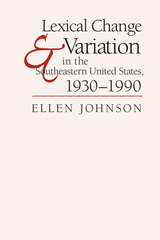 Lexical Change and Variation in the Southeastern United States, 1930-1990
Ellen Johnson
University of Alabama Press, 1996 This book discusses words used in the Southeast and how they have changed
during the 20th century. It also describes how the lexicon varies according
to the speaker's age, race, education, sex, and place of residence
(urban versus rural; coastal versus piedmont versus mountain). Data collected
in the 1930s as part of the Linguistic Atlas of the Middle and South Atlantic
States project were compared with data collected in 1990 from similar speakers
in the same communities. The results show that region was the most important
factor in differentiating dialects in the 1930s but that it is the least
important element in the 1990s, with age, education, race, and age all
showing about the same influence on the use of vocabulary. An appendix
contains a tally of the responses given by 78 speakers to 150 questions
about vocabulary items, along with speakers' commentary. Results
from the 1930s may be compared to those from 1990, making this a treasure
trove for anyone interested in regional terms or in how our speech is changing
as the South moves from an agricultural economy through industrialization
and into the information age.
Lexical Matters
Edited by Ivan A. Sag and Anna Szabolcsi
CSLI, 1992 This volume contains new research on the lexicon and its relation to other aspects of linguistics. These essays put forth empirical arguments to claim that specific theoretical assumptions concerning the lexicon play a crucial role in resolving problems pertaining to other componenets of grammer.
Topics include: syntactic/semantic interface in the areas of aspect, argument structure, and thematic roles; lexicon-based accounts of quirky case, anaphora, and control; the boundary between the lexicon and the syntax in the domains of sentence comprehension and nominal compounding; and the possibility of extending nthe concpet of blocking beyond the traditional lexicon.
Ivan Sag is a professor of linguistics at Stanford University. Anna Szabolcsi is an associate professor of linguistics at UCLA.
Center for the Study of Language and Information- Lecture Notes, Number 24
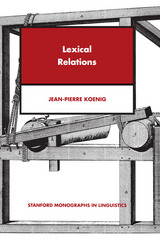 Lexical Relations
Jean-Pierre Koenig
CSLI, 1999 The thrust of this book is to provide a model of lexical relations which reconciles the lexicon's idiosyncratic and productive aspects. Building on work in Head-driven Phrase-Structure Grammar, an organization of lexical knowledge is proposed--- called the Type Underspecified Hierarchical Lexicon--- through which partial regularities, medium-size generalization, and truly productive processes receive a unified model. Its basic thesis is that all lexical relations reduce to categorization (the membership of the two related lexemes in a common category) and that category intersection is the only mechanism needed to model lexical processes provided lexical items can be stored partially underspecified as to their category membership. Aside from the conceptual simplification that results from this move, the book demonstrates that several empirical and theoretical benefits accrue to this architecture; in particular, many salient properties of morphological processes are shown to reduce to inherent, formal properties of the organization of the lexicon.
Lexical Semantics in LFG
Edited by Miriam Butt and Tracy Holloway King
CSLI, 2006 Available for the first time in years, Lexical Semantics in LFG is a reissue of the groundbreaking "Papers in Lexical Functional Grammar." It spans a diverse range of topics, including Italian unaccusatives, Malayalam causatives, derived nominals, resultatives, and non-nominative subjects in Icelandic. With its emphasis on representations of lexical semantic information that allow operations on predicate-argument relations and grammatical relations to be independent of structural configurations, the text will be of interest to both scholars and students of linguistics.
Lexical-Functional Grammar: An Introduction to Parallel Constraint-Based Syntax
Yehuda N. Falk
CSLI, 2001 With this textbook, Yehuda N. Falk provides an introduction to the theory of Lexical-Functional Grammar, aimed at both students and professionals who are familiar with other generative theories and now wish to approach LFG. Falk examines LFG's relation to more conventional theories—like Government/Binding or the Minimalism Program—and, in many respects, establishes its superiority.
Lexicon for an Affective Archive
Edited by Giulia Palladini and Marco Pustianaz
Intellect Books, 2017 To study an archive or archival materials is to encounter an affective and critical practice involved in the construction of memory. Lexicon for an Affective Archive, edited by Giulia Palladini and Marco Pustianaz, is an international collection of these encounters, offering glimpses into the intimate relations inherent in finding, remembering (or imagining), and creating an archive. Bringing together voices from a variety of fields across the humanities, performance studies, and contemporary art, and engaging in a multidisciplinary analysis, this beautifully designed and fully illustrated volume advances the idea of an “affective archive” as a useful conceptual tool—a tool which contributes to an understanding of an expanded notion of an archive and its central role in contemporary visual and performing arts.
A co-publication with NInA and Live Art Development Agency.
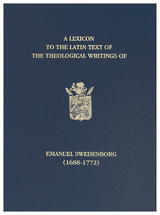 A Lexicon to the Latin Text of the Theological Writings of Emanuel Swedenborg (1688-1772)
John Chadwick
Swedenborg Foundation Publishers, 2008 A Lexicon to the Latin Textof the Theological Writings of Emanuel Swedenborg (1688–1772) by Dr. John Chadwick and Dr. Jonathan S. Rose is a unique specialist dictionary of fourteen thousand Neo-Latin words and their usages as contained in eighteenth-century theological works of Emanuel Swedenborg.
Beyond its use for scholars of Swedenborg, the Lexicon is also of great assistance to students and academics of history, philosophy, theology and science, and anyone who encounters texts written in Neo-Latin (the branch of Latin that was in use by learned writers and thinkers from the Renaissance period through to the Enlightenment and beyond). The Lexicon is beautifully and simply designed and easy to navigate. In addition to a preface by editor John Chadwick, this edition also features a new introduction by Jonathan S. Rose containing an important section on the morphology of Swedenborg’s Neo-Latin (as distinct from the morphology of classical Latin); an appreciation of the life of John Chadwick by John Elliott; an appendix with a detailed listing of the various Latin editions of Swedenborg’s theological works; and an appendix on Swedenborg’s use of the Latin Bible of Sebastian Schmidt.
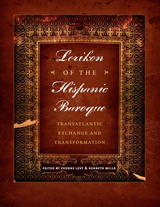 Lexikon of the Hispanic Baroque: Transatlantic Exchange and Transformation
Edited by Evonne Levy and Kenneth Mills
University of Texas Press, 2014 Over the course of some two centuries following the conquests and consolidations of Spanish rule in the Americas during the late fifteenth and early sixteenth centuries—the period designated as the Baroque—new cultural forms sprang from the cross-fertilization of Spanish, Amerindian, and African traditions. This dynamism of motion, relocation, and mutation changed things not only in Spanish America, but also in Spain, creating a transatlantic Hispanic world with new understandings of personhood, place, foodstuffs, music, animals, ownership, money and objects of value, beauty, human nature, divinity and the sacred, cultural proclivities—a whole lexikon of things in motion, variation, and relation to one another. Featuring the most creative thinking by the foremost scholars across a number of disciplines, the Lexikon of the Hispanic Baroque is a uniquely wide-ranging and sustained exploration of the profound cultural transfers and transformations that define the transatlantic Spanish world in the Baroque era. Pairs of authors—one treating the peninsular Spanish kingdoms, the other those of the Americas—provocatively investigate over forty key concepts, ranging from material objects to metaphysical notions. Illuminating difference as much as complementarity, departure as much as continuity, the book captures a dynamic universe of meanings in the various midst of its own re-creations. The Lexikon of the Hispanic Baroque joins leading work in a number of intersecting fields and will fire new research—it is the indispensible starting point for all serious scholars of the early modern Spanish world.
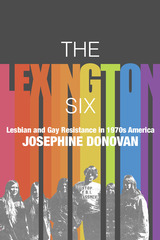 The Lexington Six: Lesbian and Gay Resistance in 1970s America
Josephine Donovan
University of Massachusetts Press, 2020 Finalist for the 2021 Lambda Literary Awards On September 23, 1970, a group of antiwar activists staged a robbery at a bank in Massachusetts, during which a police officer was killed. While the three men who participated in the robbery were soon apprehended, two women escaped and became fugitives on the FBI's Ten Most Wanted list, eventually landing in a lesbian collective in Lexington, Kentucky, during the summer of 1974. In pursuit, the FBI launched a massive dragnet. Five lesbian women and one gay man ended up in jail for refusing to cooperate with federal officials, whom they saw as invading their lives and community. Dubbed the Lexington Six, the group's resistance attracted national attention, inspiring a nationwide movement in other minority communities. Like the iconic Stonewall demonstrations, this gripping story of spirited defiance has special resonance in today's America.
Drawing on transcripts of the judicial hearings, contemporaneous newspaper accounts, hundreds of pages of FBI files released to the author under the Freedom of Information Act, and interviews with many of the participants, Josephine Donovan reconstructs this fascinating, untold story. The Lexington Six is a vital addition to LGBTQ, feminist, and radical American history.
LGBT Youth in America's Schools
Jason Cianciotto and Sean Cahill
University of Michigan Press, 2012 Jason Cianciotto and Sean Cahill, experts on lesbian, gay, bisexual, and transgender public policy advocacy, combine an accessible review of social science research with analyses of school practices and local, state, and federal laws that affect LGBT students. In addition, portraits of LGBT youth and their experiences with discrimination at school bring human faces to the issues the authors discuss. This is an essential guide for teachers, school administrators, guidance counselors, and social workers interacting with students on a daily basis; school board members and officials determining school policy; nonprofit advocates and providers of social services to youth; and academic scholars, graduate students, and researchers training the next generation of school administrators and informing future policy and practice.
LGBT Youth in America's Schools
Jason Cianciotto and Sean Cahill
University of Michigan Press, 2012 Jason Cianciotto and Sean Cahill, experts on lesbian, gay, bisexual, and transgender public policy advocacy, combine an accessible review of social science research with analyses of school practices and local, state, and federal laws that affect LGBT students. In addition, portraits of LGBT youth and their experiences with discrimination at school bring human faces to the issues the authors discuss. This is an essential guide for teachers, school administrators, guidance counselors, and social workers interacting with students on a daily basis; school board members and officials determining school policy; nonprofit advocates and providers of social services to youth; and academic scholars, graduate students, and researchers training the next generation of school administrators and informing future policy and practice.
LGBTQ Fiction and Poetry from Appalachia
Jeff Mann
West Virginia University Press, 2018 This collection, the first of its kind, gathers original and previously published fiction and poetry from lesbian, gay, bisexual, transgender, and queer authors from Appalachia. Like much Appalachian literature, these works are pervaded with an attachment to family and the mountain landscape, yet balancing queer and Appalachian identities is an undertaking fraught with conflict. This collection confronts the problematic and complex intersections of place, family, sexuality, gender, and religion with which LGBTQ Appalachians often grapple. With works by established writers such as Dorothy Allison, Silas House, Ann Pancake, Fenton Johnson, and Nickole Brown and emerging writers such as Savannah Sipple, Rahul Mehta, Mesha Maren, and Jonathan Corcoran, this collection celebrates a literary canon made up of writers who give voice to what it means to be Appalachian and LGBTQ.
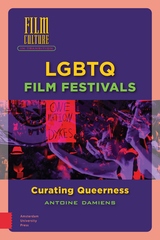 LGBTQ Film Festivals: Curating Queerness
Antoine Damiens
Amsterdam University Press, 2020 While scholars have theorized major film festivals, they have ignored smaller, ephemeral, events. In taking seriously minor European and North-American LGBTQ festivals which often only exist as traces within archival collections, this book revisits festival studies' methodological and theoretical apparatuses. As the first 'critique' of festival studies from within, LGBTQ Film Festivals argues that both festivals and queer film cultures are by definition ephemeral. The book is organized around two concepts: First, 'critical festival studies' examines the political project and disciplinary assumptions that structure festival research. Second, 'the festival as a method' pays attention to festivals' role as producers of knowledge: it argues that festivals are not mere objects of research but also actors already shaping academic, industrial, and popular cinematic knowledge. Drawing on the author's experience on the festival circuit, this book pays homage to the labour of queer organizers, critics, and scholars and opens up new avenues for festival research.
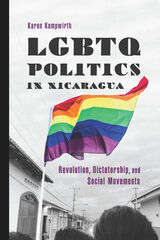 LGBTQ Politics in Nicaragua: Revolution, Dictatorship, and Social Movements
Karen Kampwirth
University of Arizona Press, 2022 The modern political tumult of Nicaragua includes revolution, dictatorship, and social movements. LGBTQ Politics in Nicaragua explores the untold stories of the LGBTQ community of Nicaragua and its role in the recent political history of the country.
Karen Kampwirth is a renowned scholar of the Nicaraguan Revolution, who has been writing at the intersection of gender and politics for decades. In this chronological telling of the last fifty years of political history in Nicaragua, Kampwirth deploys a critical new lens: understanding politics from the perspective of the country’s LGBTQ community. Kampwirth details the gay and lesbian guerrillas in the 1960s and 1970s, Nicaragua’s first openly gay television wizard in the 1980s, and the attempts by LGBTQ revolutionaries to create a civil rights movement and the subsequent squashing of that movement by the ruling Sandinista party. She analyzes the shifting political alliances, the rise of strong feminist and LGBTQ movements in Nicaragua, and the attempts by the administration of Daniel Ortega to co-opt and control these movements.
Ultimately, this is a story of struggle and defeat, progress and joy. This timely book provides a well-documented review of LGBTQ politics in modern Nicaragua, helping us to see the Sandinista Revolution and its ongoing aftermath in a new light.
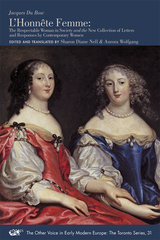 L’Honnête Femme: The Respectable Woman in Society and the New Collection of Letters and Responses by Contemporary Women
Jacques Du Bosc
Iter Press, 2014 I heartily recommend this translation and edition of the two works by Jacques Du Bosc. The introduction provides a solid, erudite entry to Du Bosc and his world, with a clear emphasis on the gender issues central to the Other Voice. Especially good is the detailed study ofthe reception of these works. Moreover, the translation is clear and readable. A great deal of work was required to transform the periodic sentences and paragraphs of seventeenthcentury French prose into an English work that is so readable and lucid for a contemporary reader who is not a specialist in the field. The long, informative titles to the essays and letters (already transparent in the table of contents) further situate material that can seem obscure to a contemporary reader. The informative notes, especially the biographical tags and the excellent use of Furetière to explore ambiguous or archaic phrases, illuminate a world that would otherwise seem opaque to many contemporary readers.
—Reverend John J. Conley, SJ
Knott Professor of Philosophy, Loyola University Maryland
L'hypothèse d'instabilité financière: Les processus capitalistes et le comportement de l'économie
Hyman P. Minsky
Diaphanes, 2013 Comment expliquer et prévoir l’instabilité qui caractérise le développement des systèmes économiques ? Comment appréhender les « marchés sauvages » qui constituent notre réalité actuelle ? Dès les années 1960, Hyman Minsky développe une théorie consacrée à l’instabilité des systèmes. Il démontre que le krach financier est un phénomène intervenant régulièrement, qui n’est dû ni à des causes externes, ni à des erreurs d’appréciation : C’est la logique des marchés financiers elle-même, bien plus que des secousses issues de la périphérie du système, qui serait à l’origine des crises. En présentant le texte central de la théorie économique d’Hyman P. Minsky, L’hypothèse d’instabilité financière offre au lecteur une première approche passionnante de cette œuvre dense, fondamentale et jusqu’à présent méconnue en France.
 Li Bai Rides a Celestial Dolphin Home
Tom Sexton
University of Alaska Press, 2018 “On the night Li Bai tried to embrace the moon / in its fullness on the surface of the Yangtze River, / blossoms scented the air, and beyond the moon / pale stars powdered the sky. That faint shiver / of white near the surface was a dolphin rising. / I carry a book of his poems whenever I travel, / poems that touch the heart like a gentle snow. / Look, over there in that marsh, a snowy egret rising.”
The day after their wedding, Tom and Sharyn Sexton set off on the more than 4,500-mile journey from Massachusetts to Alaska. Now, more than fifty years later, Tom Sexton is retracing those steps through his exceptional poetry. He describes the communities they passed through and ruminates on the changes, good and bad, that have taken place in the decades since. He still finds hope in the country and draws transformative hope from the land that connects all of us.
Appropriate for a journey that moves from east to west, the Sexton’s real-life voyage is embedded in the imaginary journey of the ancient Chinese poet, Li Bai, from Broad Pass to Polychrome Pass in the Alaska Range.
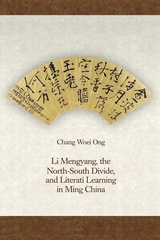 Li Mengyang, the North-South Divide, and Literati Learning in Ming China
Chang Woei Ong
Harvard University Press, 2016 Li Mengyang (1473–1530) was a scholar-official and man of letters who initiated the literary archaist movement that sought to restore ancient styles of prose and poetry in sixteenth-century China. In this first book-length study of Li in English, Chang Woei Ong comprehensively examines his intellectual scheme and situates Li’s quest to redefine literati learning as a way to build a perfect social order in the context of intellectual transitions since the Song dynasty.
Ong examines Li’s emergence at the distinctive historical juncture of the mid-Ming dynasty, when differences in literati cultures and visions were articulated as a north-south divide (both real and perceived) among Chinese thinkers. Ong argues that this divide, and the ways in which Ming literati compartmentalized learning, is key to understanding Li’s thought and its legacy. Though a northerner, Li became a powerful voice in prose and poetry, in both a positive and negative sense, as he was championed or castigated by the southern literati communities. The southern literati’s indifference toward Li’s other intellectual endeavors—including cosmology, ethics, political philosophy, and historiography—furthered his utter marginalization in those fields.
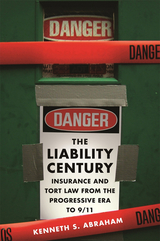 The Liability Century: Insurance and Tort Law from the Progressive Era to 9/11
Kenneth S. Abraham
Harvard University Press, 2008 Kenneth Abraham explores the development and interdependency of the tort liability regime and the insurance system in the United States during the twentieth century and beyond, including the events of September 11, 2001.
From its beginning late in the nineteenth century, the availability of liability insurance led to the creation of new forms of liability, heavily influenced expansion of the liabilities that already existed, and continually promoted increases in the amount of money that was awarded in tort suits. A “liability-and-insurance spiral” emerged, in which the availability of liability insurance encouraged the imposition of more liability, and, in turn, the imposition of liability encouraged the further spread of insurance.
Liability insurance was not merely a source of funding for ever-greater amounts of tort liability. Liability insurers came to dominate tort litigation. They defended lawsuits against their policyholders, and they decided which cases to settle, fight, or appeal. The very idea behind insurance––that spreading losses among large numbers of policyholders is desirable––came to influence the ideology of tort law. To serve the aim of loss spreading, liability had to expand.
Today the tort liability and insurance systems constantly interact, and to reform one the role of the other must be fully understood.
 Liars, Brutes, and Gluttons: A Relevance-Theory Solution for Titus 1:12
Isaiah Allen
SBL Press, 2025 Did the author of Titus consider Cretans to be liars, brutes, and gluttons, or was he confronting bigotry head-on? Isaiah Allen revisits long-held, conventional interpretations of Titus 1:12 that maintain that the author, using Paul’s name, considered Cretans to be crude, vicious, and worthy of rebuke. Based on insights from the cognitive linguistics approach of relevance theory, Allen contends that the way Titus’s original first-century audience would have engaged the text is quite different from how many modern interpreters read it. Additionally, Allen proposes that the letter’s context corresponds more closely to the situation of the early church during the lifetime of Paul than many conventional interpretations suggest. Allen concludes that Paul was not participating in bigotry but instead exposed and rebuked it in his letter to Titus. Allen examines linguistic evidence that reveals an ancient biblical antibigotry message that presages modern sensibilities about ethnic prejudice and racism.
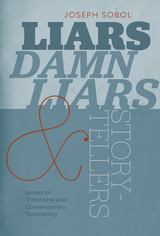 Liars, Damn Liars, and Storytellers: Essays on Traditional and Contemporary Storytelling
Joseph Sobol
University of Tennessee Press, 2020 Joseph Sobol is one of a select few contemporary scholar-practitioners to chart the evolution of storytelling from traditional foundations to its current multifarious presence in American life. The years since his classic The Storytellers’ Journey: An American Revival (1999), have brought seismic shifts in storytelling circles. Essays gathered here move between cultural history, critical analysis, and personal narratives to showcase the efforts of traditional and contemporary storytellers to make their presence felt in the world.
The book begins with an account of recent changes in the storytelling landscape, including the growth of a new generation of urban personal storytelling venues sparked by The Moth. Next is a suite of essays on Appalachian Jack tales, the best-known cycle of traditional American wonder tales, and an account of its most celebrated practitioners, including close encounters with the traditional master, Ray Hicks. The next set examines frames through which storytellers capture truth—historical, legendary, literary, oral traditional, and personal. Stylistic differences between northern and southern tellers are affectionately portrayed, with a special look at the late, much-loved Alabaman Kathryn Tucker Windham.
The final section makes the case for informed critical writing on storytelling performance, through a survey of notable contemporary storytellers’ work, a look at the ethics of storytelling genres, and a nuanced probe of truth and fiction in storytelling settings. A tapestry of personal stories, social criticism, and artistic illuminations, Liars, Damn Liars, and Storytellers is valuable not only to scholars and students in performance, folklore, cultural studies, and theater, but also to general readers with a love for the storytelling art.
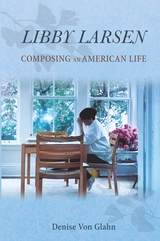 Libby Larsen: Composing an American Life
Denise Glahn
University of Illinois Press, 2017 Libby Larsen has composed award-winning music performed around the world. Her works range from chamber pieces and song cycles to operas to large-scale works for orchestra and chorus. At the same time, she has advocated for living composers and new music since cofounding the American Composers Forum in 1973. Denise Von Glahn’s in-depth examination of Larsen merges traditional biography with a daring scholarly foray: an ethnography of one active artist. Drawing on musical analysis, the composer’s personal archive, and seven years of interviews with Larsen and those in her orbit, Von Glahn illuminates the polyphony of achievements that make up Larsen’s public and private lives. In considering Larsen’s musical impact, Von Glahn delves into how elements of the personal—a 1950s childhood, spiritual seeking, love of nature, and status as an “important woman artist”—inform her work. The result is a portrait of a musical pathfinder who continues to defy expectations and reject labels.
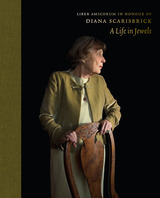 Liber Amicorum in Honour of Diana Scarisbrick: A Life in Jewels
Edited by Beatriz Chadour-Sampson, Sandra Hindman, and Carla Van De Puttelaar
Paul Holberton Publishing, 2022 Coinciding with Diana Scarisbrick’s ninety-fourth birthday, this work honors her extraordinary career as the “world’s leading jewelry historian.” Through twenty contributions by noted scholars, Liber Amicorum explores the pioneering research accomplished by jewelry historian Diana Scarisbrick. These collected pieces celebrate both the length of Scarisbrick’s career and its wide-ranging nature, touching upon her work with everything from gems, rings, chalices, bindings, and crown jewels to contemporary jewelry production, jewel theft, and individual collections. Throughout the book, the insightful historical research of the contributors is beautifully supported by high-quality illustrations. These bring their essays to life, highlighting the splendor and fragility of some of the objects that are discussed as each delves into the work of this eminent scholar.
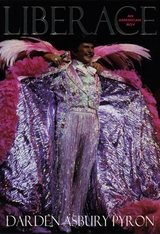 Liberace: An American Boy
Darden Asbury Pyron
University of Chicago Press, 2000 More people watched his nationally syndicated television show between 1953 and 1955 than followed I Love Lucy. Even a decade after his death, the attendance records he set at Madison Square Garden, the Hollywood Bowl, and Radio City Music Hall still stand. Arguably the most popular entertainer of the twentieth century, this very public figure nonetheless kept more than a few secrets. Darden Asbury Pyron, author of the acclaimed and bestselling Southern Daughter: The Life of Margaret Mitchell, leads us through the life of America's foremost showman with his fresh, provocative, and definitive portrait of Liberace, an American boy.
Liberace's career follows the trajectory of the classic American dream. Born in the Midwest to Polish-Italian immigrant parents, he was a child prodigy who, by the age of twenty, had performed with the Chicago Symphony Orchestra. Abandoning the concert stage for the lucrative and glittery world of nightclubs, celebrities, and television, Liberace became America's most popular entertainer. While wildly successful and good natured outwardly, Liberace, Pyron reveals, was a complicated man whose political, social, and religious conservativism existed side-by-side with a lifetime of secretive homosexuality. Even so, his swishy persona belied an inner life of ferocious aggression and ambition. Pyron relates this private man to his public persona and places this remarkable life in the rapidly changing cultural landscape of twentieth-century America.
Pyron presents Liberace's life as a metaphor, for both good and ill, of American culture, with its shopping malls and insatiable hunger for celebrity. In this fascinating biography, Pyron complicates and celebrates our image of the man for whom the streets were paved with gold lamé.
"An entertaining and rewarding biography of the pianist and entertainer whose fans' adoration was equaled only by his critics' loathing. . . . [Pyron] persuasively argues that Liberace, thoroughly and rigorously trained, was a genuine musician as well as a brilliant showman. . . . [A]n immensely entertaining story that should be fascinating and pleasurable to anyone with an interest in American popular culture."—Kirkus Reviews
"This is a wonderful book, what biography ought to be and so seldom is."—Kathryn Hughes, Daily Telegraph
"[A]bsorbing and insightful. . . . Pyron's interests are far-ranging and illuminating-from the influence of a Roman Catholic sensibility on Liberace and gay culture to the aesthetics of television and the social importance of self-improvement books in the 1950s. Finally, he achieves what many readers might consider impossible: a persuasive case for Liberace's life and times as the embodiment of an important cultural moment."—Publishers Weekly
"Liberace, coming on top of his amazing life of Margaret Mitchell, Southern Daughter, puts Darden Pyron in the very first rank of American biographers. His books are as exciting as the lives of his subjects."—Tom Wolfe
"Fascinating, thoughtful, exhaustive, and well-written, this book will serve as the standard biography of a complex icon of American popular culture."—Library Journal
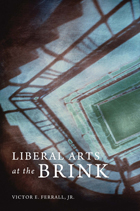 Liberal Arts at the Brink
Victor E. Ferrall Jr.
Harvard University Press, 2011 Liberal arts colleges represent a tiny portion of the higher education market—no more than 2 percent of enrollees. Yet they produce a stunningly large percentage of America’s leaders in virtually every field of endeavor. The educational experience they offer—small classes led by professors devoted to teaching and mentoring, in a community dedicated to learning—has been a uniquely American higher education ideal.
Liberal Arts at the Brink is a wake-up call for everyone who values liberal arts education. A former college president trained in law and economics, Ferrall shows how a spiraling demand for career-related education has pressured liberal arts colleges to become vocational, distorting their mission and core values. The relentless competition among them to attract the “best” students has driven down tuition revenues while driving up operating expenses to levels the colleges cannot cover. The weakest are being forced to sell out to vocational for-profit universities or close their doors. The handful of wealthy elite colleges risk becoming mere dispensers of employment and professional school credentials. The rest face the prospect of moving away from liberal arts and toward vocational education in order to survive.
Writing in a personable, witty style, Ferrall tackles the host of threats and challenges liberal arts colleges now confront. Despite these daunting realities, he makes a spirited case for the unique benefits of the education they offer—to students and the nation. He urges liberal arts colleges to stop going it alone and instead band together to promote their mission and ensure their future.
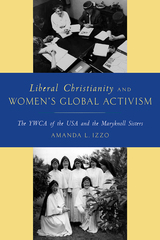 Liberal Christianity and Women's Global Activism: The YWCA of the USA and the Maryknoll Sisters
Amanda L. Izzo
Rutgers University Press, 2018 Religiously influenced social movements tend to be characterized as products of the conservative turn in Protestant and Catholic life in the latter part of the twentieth century, with women's mobilizations centering on defense of the “traditional” family. In Liberal Christianity and Women’s Global Activism, Amanda L. Izzo argues that, contrary to this view, liberal wings of Christian churches have remained an instrumental presence in U.S. and transnational politics. Women have been at the forefront of such efforts.
Focusing on the histories of two highly influential groups, the Young Women’s Christian Association of the USA, an interdenominational Protestant organization, and the Maryknoll Sisters, a Roman Catholic religious order, Izzo offers new perspectives on the contributions of these women to transnational social movements, women’s history, and religious studies, as she traces the connections between turn-of-the-century Christian women’s reform culture and liberal and left-wing religious social movements of the 1960s and 1970s. Izzo suggests that shared ethical, theological, and institutional underpinnings can transcend denominational divides, and that strategies for social change often associated with secular feminism have ties to spiritually inspired social movements.
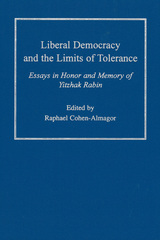 Liberal Democracy and the Limits of Tolerance: Essays in Honor and Memory of Yitzhak Rabin
Raphael Cohen-Almagor, Editor
University of Michigan Press, 2000 An irony inherent in all political systems is that the principles that underlie and characterize them can also endanger and destroy them. This collection examines the limits that need to be imposed on democracy, liberty, and tolerance in order to ensure the survival of the societies that cherish them. The essays in this volume consider the philosophical difficulties inherent in the concepts of liberty and tolerance; at the same time, they ponder practical problems arising from the tensions between the forces of democracy and the destructive elements that take advantage of liberty to bring harm that undermines democracy.
Written in the wake of the assasination of Yitzhak Rabin, this volume is thus dedicated to the question of boundaries: how should democracies cope with antidemocratic forces that challenge its system? How should we respond to threats that undermine democracy and at the same time retain our values and maintain our commitment to democracy and to its underlying values?
All the essays here share a belief in the urgency of the need to tackle and find adequate answers to radicalism and political extremism. They cover such topics as the dilemmas embodied in the notion of tolerance, including the cost and regulation of free speech; incitement as distinct from advocacy; the challenge of religious extremism to liberal democracy; the problematics of hate speech; free communication, freedom of the media, and especially the relationships between media and terrorism.
The contributors to this volume are David E. Boeyink, Harvey Chisick, Irwin Cotler, David Feldman, Owen Fiss, David Goldberg, J. Michael Jaffe, Edmund B. Lambeth, Sam Lehman-Wilzig, Joseph Eliot Magnet, Richard Moon, Frederick Schauer, and L.W. Sumner. The volume includes the opening remarks of Mrs.Yitzhak Rabin to the conference--dedicated to the late Yitzhak Rabin--at which these papers were originally presented. These studies will appeal to politicians, sociologists, media educators and professionals, jurists and lawyers, as well as the general public.
Liberal Education and Citizenship in a Free Society
Justin Buckley Dyer
University of Missouri Press, 2023 The liberal arts university has been in decline since well before the virtualization of campus life, increasingly inviting public skepticism about its viability as an institution of personal, civic, and professional growth. New technologies that might have brought people together have instead frustrated the university’s capacity to foster thoughtful citizenship among tomorrow’s leaders and exacerbated socioeconomic inequalities that are poisoning America’s civic culture.
With Liberal Education and Citizenship in a Free Society, a collection of 19 original essays, editors Justin Dyer and Constantine Vassiliou present the work of a diverse group of scholars to assess the value of a liberal arts education in the face of market, technological, cultural, and political forces shaping higher learning today.
Liberal Education Public Interest
James O. Freedman
University of Iowa Press, 2003
In 1996 James Freedman published Idealism and Liberal Education, which discussed the ideals that shaped his life as an intellectual, a law professor, and a college and university president. In this new collection of essays, he convincingly explores his firm belief that a liberal education is the “surest instrument yet devised for developing those civilizing qualities of mind and character that enable men and women to lead satisfying lives and to make significant contributions to a democratic society.”
Freedman concentrates directly upon the problems facing university presidents and all university administrators. A passionate and beautifully written argument for the benefits of a liberal education, this book
|
|
